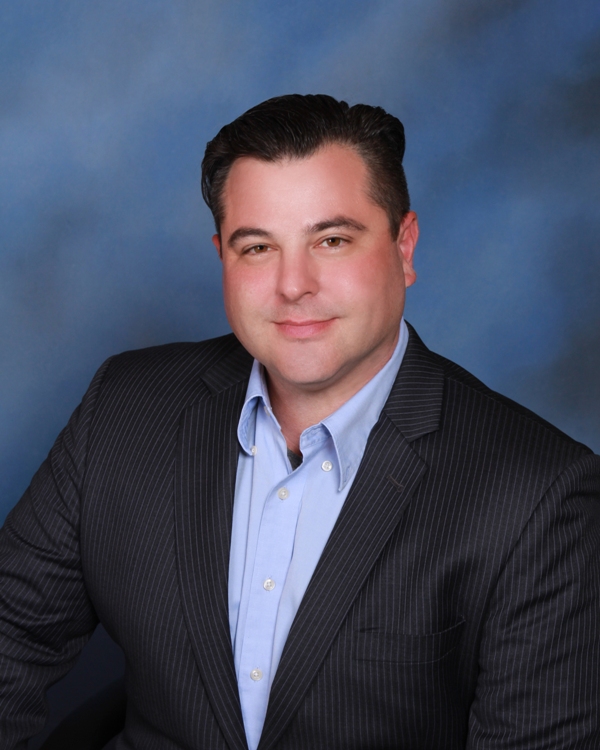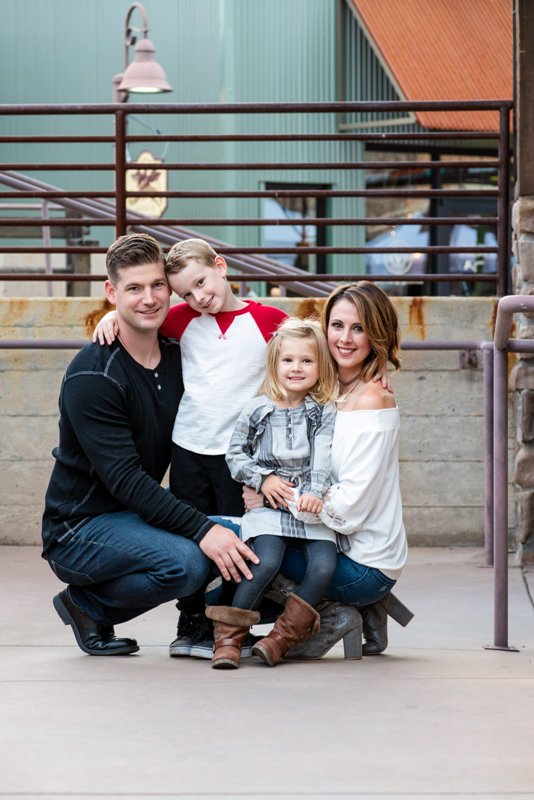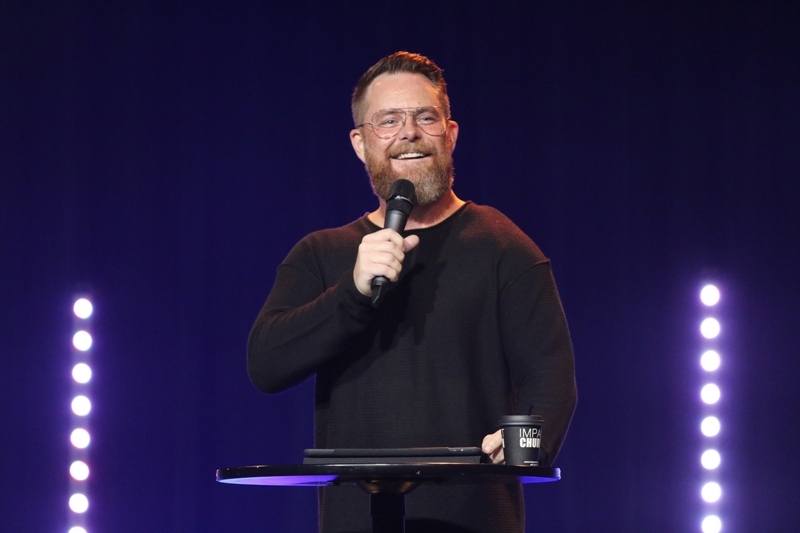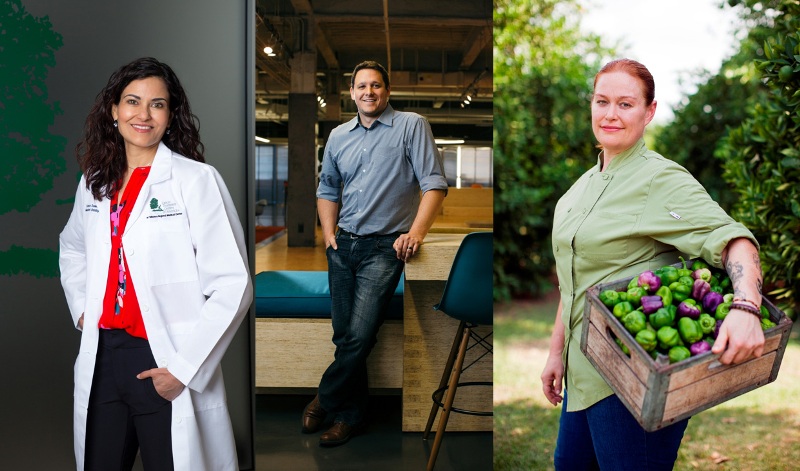
Female athletes who have been to the Olympics and beyond. Game-changing doctors and bold business leaders. The talented stars of the local art scene. Philanthropists with an eye on the betterment of the community. Let us introduce you to 32 of the Valley’s most influential men and women.
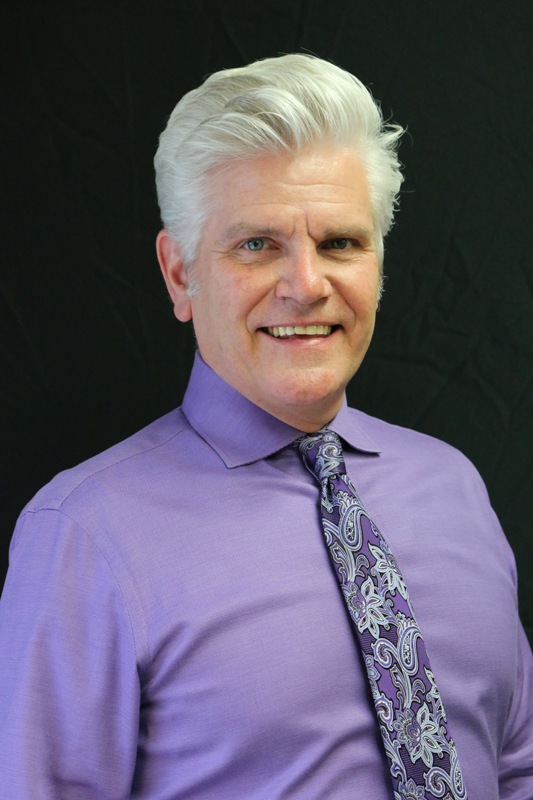
Bobb Cooper
Producing artistic director of Valley Youth Theatre, which celebrates its 31st anniversary this year (oh, and Emma Stone named Cooper in her Oscar speech)
How did you get your start in the arts? After performing in school productions in my hometown of Detroit, I began my professional career at 17 and went on to perform as an actor, singer and dancer in New York. I was then in national tours and spent 13 years in Hollywood as a professional actor, producer, writer and entertainer. Most notably, my wife, Karol, and I created the characters of Bobbo and Kookie The Clowns and performed for hundreds of parties, including children’s birthday parties, many of which were for the children of celebrities including Arnold Schwarzenegger and Jim Carrey.
What is the most rewarding part of your career? What about the biggest challenge? One of the biggest challenges–which we’re beginning to overcome–is convincing patrons, donors, business partners and the media that, just because our performers are all under 20 years of age, that doesn’t mean you aren’t going to get a completely professional performance and high-quality production. The time, talent and dedication these young people put into every production is equal to that of any adult, if not greater. What’s most rewarding is the fact that this is changing, and we are gaining the respect and admiration of the community, while impressing the importance of children in the arts and in the community.
You have been instrumental in launching the careers of well-known actors, namely Emma Stone. What goes through your head when you’re being identified in a Vanity Fair article or thanked in an Academy Award speech? The first thing I think is, ‘Good God, what an honor.’ It makes me feel that the work I do every day—to help young people be the best they can be through performing arts—really does matter.
What do you hope for the future of arts and theater within the Valley? I really hope the Valley, including corporations, individuals and foundations, will take an even stronger stand in continuing to embrace the arts and will increase that stand, over time.
In what ways do you give back to the community? I believe it’s through VYT’s community outreach programs. They provide accessibility to live theater that children may not otherwise have and demonstrate our commitment to giving back to the community that supports us. Sponsor-a-Seat allows disadvantaged children from dozens of social service organizations to attend a free performance and enjoy lunch with the cast and crew. Literacy and the Arts gives students from Title 1 schools a page-to-stage experience by effectively combining the power of in-school learning with the experience of live theatre. We also host HopeKids dress rehearsal nights, bringing children with chronic and life-threatening illnesses and their families to a free performance. Our Military Nights provide complimentary tickets to families of the armed forces. Field trips provide a way for teachers to supplement under-funded school arts programs by purchasing tickets at a greatly reduced price.
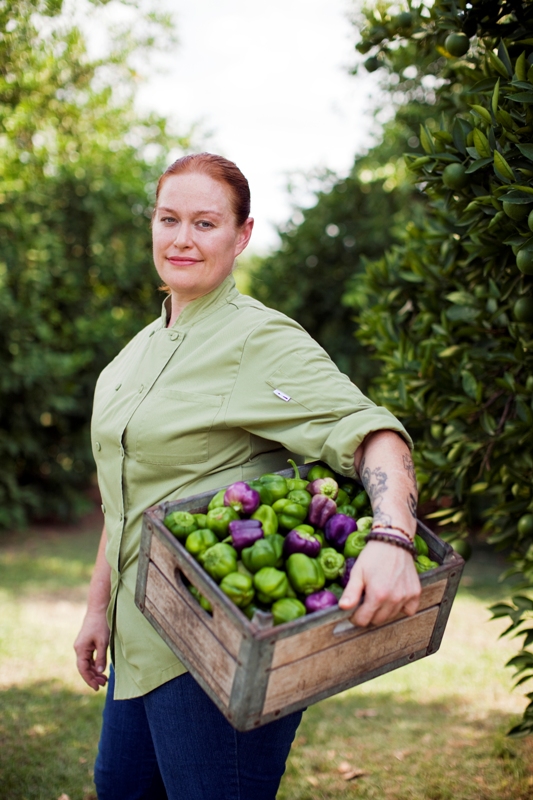
Charleen Badman
Chef/co-owner of Scottsdale’s beloved FnB restaurant—and winner of the 2019 James Beard Award for Best Chef: Southwest (the first time this distinguished prize has gone to a local chef in more than a decade)
How did you get your start in the culinary field? In high school, I entered a program called F.E.A.S.T. (Food Education and Service Training). It’s a Tucson-based program for juniors and seniors in high school. What is the most rewarding part of your career? The goal every night is finishing dinner service with happy guests.
What about the biggest challenge? When the grease trap backs up at 11 p.m. on a Saturday night.
Congrats on your James Beard. What went through your head when your name was announced as the winning chef? Zooey Deschanel said MY name!
In what ways has the Valley food and beverage realm evolved over the past several years? More chefs are inclined to support our farmers, ranchers and wine makers from Arizona.
What do you hope for the future of food and beverage within the Valley? I hope we—chefs, winemakers, bartenders, restaurant owners, sommeliers—are able to receive more national attention for our hard work and dedication showcasing our great state.
What advice do you have for budding female chefs? The same advice I give for budding male chefs: Put your head down, work hard, stay focused.
In what ways do you give back to the community? Ten years ago, I started participating at Echo (then Arcadia Neighborhood Learning Center) in the Chef in the Garden program created by Taylor Nelson and Ann and Lou Rodarte, teaching children where food comes from. That morphed into starting Blue Watermelon Project, which is a coalition of chefs, farmers, educators and community food activists interested in volunteering their time and resources to inspiring kids from kindergarten through high school to make better food choices. We’re in our third year, and the program continues to grow.
What influence do you hope to have on the Valley? We eat more local vegetables. And that chefs continue to showcase them on their menus because then I can eat them on the rare occasion I get to go out to eat.
What are some of your free-time passions? Gardening in the “village” (my backyard garden) and yoga.
Craig J. Rosenstein
Founder and owner of Rosenstein Law Group, which celebrates 12 years of business in Scottsdale and focuses on DUI Criminal Defense, as well as a proud pop of two and new owner of Hi Health
Why were you drawn to law? I have always had a profound interest in the way the government works and more specifically how it applies to the everyday lives of its citizens. What you learn very quickly is that there is a constant and unending assault on the rights of every citizen. The erosion is usually the result of good intentioned but overzealous government officials. The Court system is the only place where that encroachment can be checked. I thrive on knowing that my daily work is holding the line and preserving the rights we know and love for my kids and the next generation.
What is the most rewarding part of your career? What about the biggest challenge? My job is stressful. My team and I are often the only thing that stands between our client’s freedom and those who wish to take it from them. Our clients need us, and we love nothing more than being there for them. It is both the most rewarding and most stressful part of what we do.
Can you share a client story that is particularly special to you? I tried a DUI case where my client was HIV positive and his anti-viral medications made him nauseous. He used marijuana prior to medical marijuana being passed into law to help with the nausea. He was objectively sober at the time of his arrest, as he had no active THC in his system. One of the best moments of my career was when the jury returned a not guilty verdict. He had so much riding on that result, as he would have lost his job and therefore his health insurance that covered his very expensive lifesaving medications, if he had been convicted. That misdemeanor DUI case literally held his life on the line and fortunately justice prevailed.
What is your hope for the future of the law field in the Valley? I am extremely proud of my involvement in Arizona Attorneys for Criminal Justice (AACJ) in which I am a board member and was its president last year. Our role can be seen and felt by each and every citizen. Our involvement is seen in the lack of blatantly unconstitutional laws coming out of the legislature that had previously embarrassed our state on a national level. We see many important challenges in the coming years and are proud of the steps we’re taking now to be proactive in addressing them.
What influence do you hope to have on the Valley? I have always been and will always be a people person. My personal influence on the Valley will be measured in only one metric: how I help people. That’s certainly true for our clients but it’s also true for the amazing men and women who currently work and those that previously have worked for me. If my lasting legacy on the Valley is a group of a hardworking, ultra-competent attorneys and staff who care deeply about their clients and understand the importance of communicating with their clients, then I will be a happy man.

Brian Babineau/NBAE via Getty Images
Diana Taurasi
Basketball player with the Phoenix Mercury, WNBA's all-time leading scorer and four-time Olympian
Did you always dream of playing basketball professionally? No, not really. When I was younger, I just played basketball because I just really enjoyed it and it was something to get me out of the house. It was something that I became very competitive at. The idea of playing professional was something that came after high school when I got to college.
What is the most rewarding part of your career? There’s something to be said when you stick with something for a long time. When things are going well, when things are going bad and you can just stay with it and keep grinding away. I think that’s given me a better appreciation of hard work and a skill I can take with me no matter where I go, whether I’m playing basketball or not.
Why do you think you have been so successful in your career? You have to have a lot of luck. You have to be in the right place, with the right people, with the right mindset, and I’ve been really lucky to be in those places a lot in my career. You have to give up something in life to get what you want. The things people don’t notice and the things people don’t know. If you talk to anyone who has gone a long way in their profession, they’ll say the same thing. I’ve given up a lot and have gotten a lot in return, so I’ve been lucky.
What do you envision for the future of women’s sports? I think you’ve seen this evolution in the last couple of years of it being on the main stage and on a larger scale with more time and more exposure. I just hope it continues. These little fads in sports can come and go, but I think this is something that has been established for a while now. When you make it your career and your passion, you hope people take appreciation of it.
What advice do you have for a youth athlete with dreams of playing professionally? Enjoy the game. Don’t worry about the end process or where you may end up in 10 years. Just worry about that day, have fun with it, enjoy it and embrace it. Don’t take it too seriously.
What influence do you hope to have on the Valley? Phoenix has been home now for 15 years and the more I think about life after basketball, the more I think about spending my whole life here in Phoenix. It’s such a great city, and it has supported my career since day one. There’s such a passion and a sense of community even with it being one of the largest cities in the country. There’s this thread that incorporates every person that moves here from a lot of different places, then you have the hometown Phoenicians who love it here, so there’s just a lot of great chemistry.
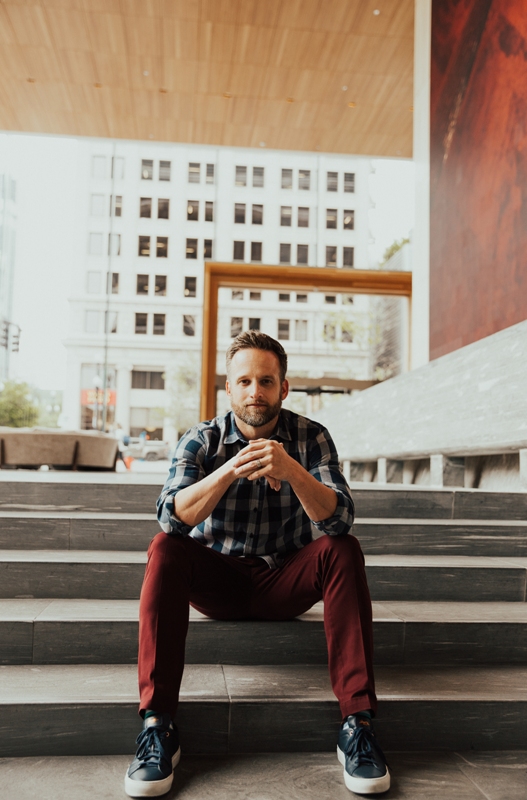
Catching up with…
Dr. Brian Harris
Since being featured in 2018 Most Influential Phoenicians, Dr. Brian Harris of Harris Dental has seen a substantial growth in his widely celebrated SmileVirtual software platform. “SmileVirtual allows dentists to offer virtual consults for their patients,” he says. “We are now being used by 180 dental offices across the United States and three other countries.” This progress has even led Dr. Harris to be called “the new face of cosmetic dentistry.” In the coming year, he plans to continue to transform the dental space and allow patients all over the world to get their questions answered for free via SmileVirtual. The Arizona native owns and operates the Biltmore-based Harris Dental with his father and brother, who are also dentists.
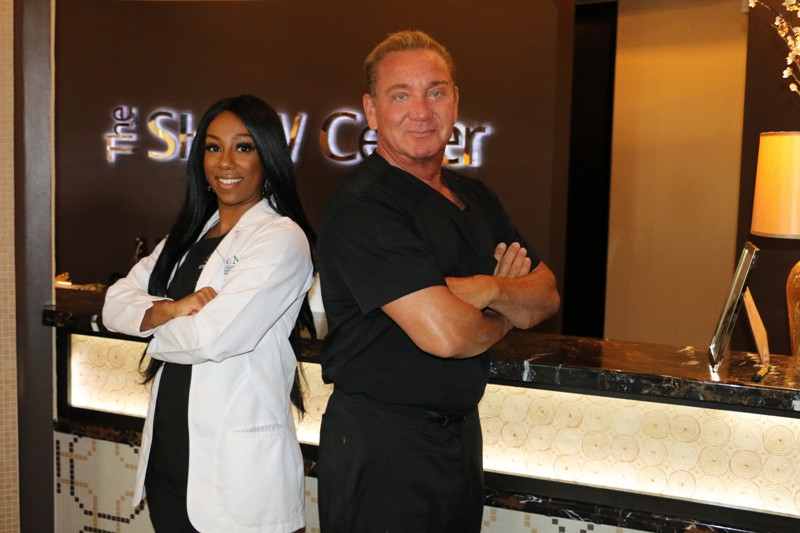
Dr. Kenya Arnold
Naturopathic MD at The REGEN Cliniq at The SHAW Center
What is The REGEN Cliniq at The SHAW Center? Remaining at the forefront of innovation, The SHAW Center continues to be a trailblazer in the aesthetic community. Adding The REGEN Cliniq to The SHAW Center bridges the gap between traditional and alternative medicine, allowing us to achieve aesthetic results that weren’t attainable before. The REGEN Cliniq is the integrative branch of The SHAW Center. In addition to traditional aesthetic treatments, I offer alternative medicine and regenerative treatments such as stem cell therapy, second-generation PRP (PRF), Bio-Filler, cosmetic Ozone Therapy, cosmetic acupuncture, IV nutrient therapy, vitamin therapy, weight loss protocols like HCG, and nutritional planning and support.
Why did you decide to become a naturopath? My mom is a nurse, and she sprinkled the healthcare field into my life from an early age. I was the nerd in preschool who would look at my hands and say “Look at my phalanges!” So the vision was ignited from an early age and blossomed into something worth pursuing. When it was time to make a decision on what type of medicine I wanted to practice, I narrowed it down to three fields: plastic surgery, orthodontics and dermatology. I realized that all three of these fields had one thing in common: aesthetic perfection. Internal beauty is very important to me, so this sparked my passion for restoring beauty from the inside out which led me to pursue my Doctorate Degree in Naturopathic Medicine.
How do you integrate naturopathic medicine with plastic surgery? Plastic surgery addresses the physical concerns of the patient and naturopathic medicine works cohesively with this by restoring the inner well-being of our patients. Dr. [Lawrence] Shaw and I work in tandem with our patients to achieve optimal health and well-being; I support our patients with pre- and post-surgical treatment options like immune-boosting supplements, anti-inflammatories, nutritional support, IV therapy and weight loss protocols. Our patients benefit from our collaborative approach to health, wellness and beauty.
What is the most rewarding part of your career? Being able to change lives. I love the transformation of mind, body and soul. So often physicians work on the physical portion of a patient’s well-being, and they don’t focus on the whole person. With Naturopathic Medicine, I focus on addressing the root cause of a patient’s health concerns, instead of treating the symptoms. I love when I can help my patient look and feel their best.
What influence do you hope to have on the Valley? I hope to impact people on a deeper level to change their understanding of the true meaning of health and beauty. I want to guide the Valley in making healthy choices, while remaining active, and being the healthiest version of themselves.
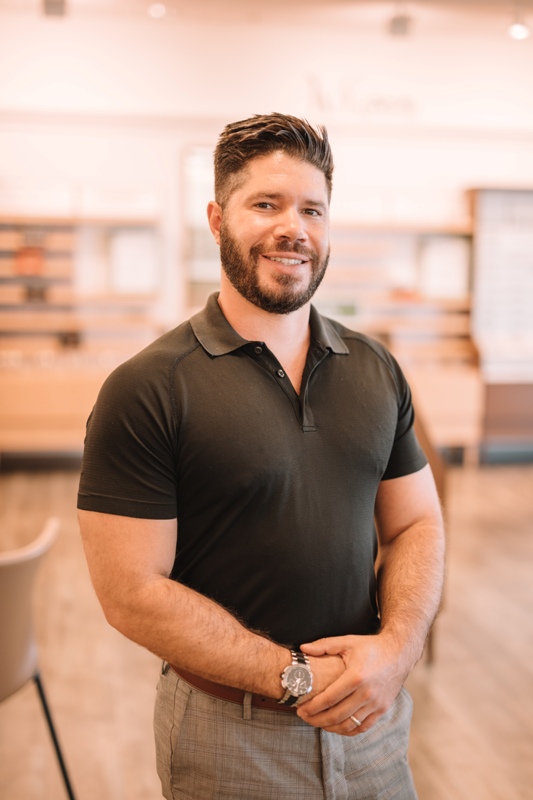
Abby Stevens
Dr. Matthew Campouris
Optometrist with Campouris Eyecare, located inside Pearle Vision North Scottsdale
How did you get your start in the medical industry? When I was a freshman in undergrad at ASU, I didn’t really know what I wanted to do occupationally. I knew I wanted to help others. I just didn’t know how I wanted to help others. After taking several science-based classes dealing heavily with human anatomy and physiology, I discovered my passion for the medical field. Because I believe that vision is our most prized sense we possess, optometry seemed like the perfect fit. Nine short years of schooling later, my dream became a reality.
What is the most rewarding part of your career? Every day I get to provide people the gift of sight. There is nothing better than watching someone really see for the first time.
Why do you think you have been so successful in your career? I’ve been blessed to work in an area with patients that I can really relate to and establish a relationship where they feel comfortable in my care. My goal is to not only assist in correcting any visual complaints, but also to provide preventative care with regular ocular evaluations. Genuinely caring about my patients has been the root to my success.
Do you have a patient story that you have been particularly moved by? I have had several patients come in not knowing their vision was and has always been severely compromised. Most don’t have a frame of reference to compare to because they have always seen the world in only one way. With these particular individuals, it has always been extremely rewarding watching them see the world in full clarity for the first time. It not only changes a patient’s life when they are able to see clearly, but it allows to do better in school and be a more functional member of society. These are monumental moments in their lives.
What do you envision for the future of Valley medicine? As the city continues to grow, keeping up with the demand in healthcare can prove difficult. Out of convenience, some of us have started relying on remote forms of examinations. These examinations provide little to no information as to whether or not any vision or life-threatening conditions exist like ocular melanomas. This is especially important here in the Valley as we are heavily exposed to the sun. It is crucial that we establish proactive care with annual health checks and encourage young adults to pursue careers in medicine/healthcare.
What influence do you hope to have on the Valley? I hope to simply educate everyone on the importance of annual eye examinations for all ages. Ocular melanomas are something that can pop up on anyone’s retinas. If something like this pops up in the back of our eyes, it will grow and spread before any symptoms manifest. It essentially goes undetected without a retinal evaluation. By the time the vision is affected, it’s often too late.
In what ways do you give back to the community? I currently provide military screenings for those enlisting and, in the near future, school screenings. Without being able to see the board at school or a book in front of them, they are at a huge disadvantage.
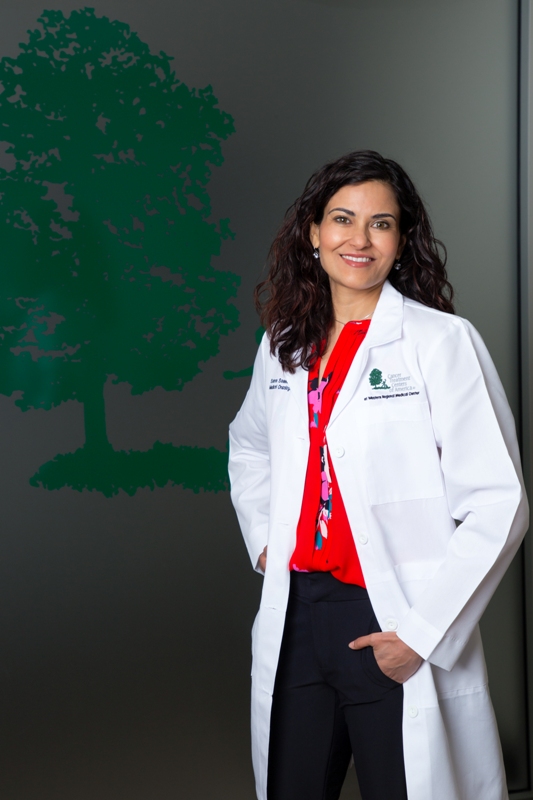
Dr. Saima Saeed
Medical director of CTCA Outpatient Care Centers in Scottsdale, North Phoenix and Gilbert, hematologist and medical oncologist
You were drawn to CTCA for its “whole-person” treatment. What is that? A person with cancer is not just their cancer. They are human beings with feelings and needs. It is important for me to get to know the patient on a personal level and treat the "whole" person—not just their disease. Placing an emphasis on addressing everything they may be dealing with can impact the relationship I have with my patients and helps support their health and healing.
What is the most exciting advancement in your field currently? What about an advancement you see on the horizon? We have seen advancements in targeted therapy which hone in on cancer-specific mutations in cancer cells, as well as immunotherapy, which allows patient’s own immune system to recognize and attack cancer cells. I believe we are going to hear more about how our microbiome or gut bacteria play a role in cancer. By developing medicines based on microbiome science, we can boost up a suppressed immune system in cancer patients. Clinical trials are currently investigating this approach.
What is the most rewarding part of your career? What about the biggest challenge? I love the relationships I have with my patients. I consider many of them friends. I enjoy sharing in their victories and supporting them through the tough times. Providing patients with support and quality of life is equally as important as treating their cancer. The biggest challenges we face are high copays or lack of insurance coverage. Because of this, patients may become responsible for a greater portion of their healthcare, which can limit their access to certain treatments.
What is your hope for the future of the health field in the Valley? I would love to see all patients in the Valley have access to health care regardless of their financial situation.
What influence do you hope to have on the Valley? I hope to be a role model for others and inspire people to be healthy and fit both emotionally and physically. There are so many things we can do to be proactive including eating healthy food, getting quality sleep, staying social, limiting our stress and staying active, all of which I do on a daily basis.
In what ways do you give back to the community? I joyfully donate my time and money to animal shelters and charities in the community. I also enjoy teaching and will say yes to any opportunity that allows me to educate our future physicians.
What are some of your free-time passions? I love spending time with my six animals. They just light me up. I enjoy staying active and work out most days of the week. I am also a foodie and enjoy trying all the amazing restaurants in the Valley.
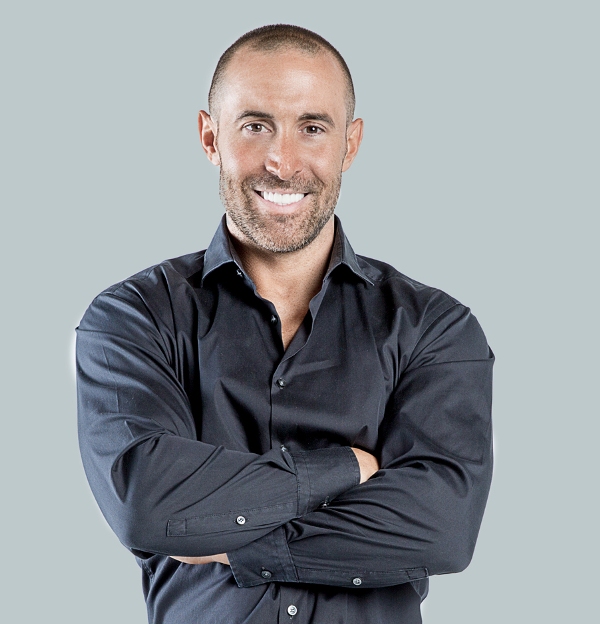
Frank DiMaggio
Founder of MDF Development, the Valley’s premier luxury design/build and remodeling firm
This wasn’t your first career path. How did you end up in the fields of real estate and design/build? I founded a social media app for apartment communities that would introduce residents to their neighbors. At that time, I was lucky enough to meet one of the top real estate developers in the country. He was my primary investor in the app and, at a later point, was my mentor in learning the building business. To top it off, I went on a blind date one day and met an interior designer. Little did I know she was arguably one of the best in town, and eventually became my partner in business—and in life. The rest is history.
What do you believe is the secret to your success? We have a unique formula. Having such a powerful and informative investor behind us, combined with a top designer and entrepreneurial sales and leadership, gives us the assurance that if the deal makes sense, we can move forward quickly and confidently. Once we start a project, we don’t just remodel it; we re-build and re-invent the entire house. It gives our projects a competitive advantage in the space.
What is the most rewarding part of your career? What about the biggest challenge? It’s an incredibly rewarding experience to see the joy our customers get from finding their dream home and hearing how happy they are. The biggest challenge is managing client expectations. Everyone wants their house to be done extremely quickly but finding the right sub-contractors and keeping them on schedule is always a challenge and can be frustrating at times, for us and our customers.
You specialize in “livable luxury.” How do you define that? “Livable luxury” is that sweet spot where a house feels modern but gives you that warm “home sweet home”-type feeling. It is fresh and current but has character and isn’t cold. It’s a delicate balance that great designers can pull off but is surprisingly hard to achieve.
What influence do you hope to have on the Valley? I don't know about the influence I may be having, but I am super proud of the influence our projects are having. Creating a handful of record-breaking price-per-foot sales in some of the most prestigious gated communities in Scottsdale, Paradise Valley and Arcadia has really impacted the local real estate values.
In what ways do you give back to the community? Being so early in my career, the best way to give back is to run a trustworthy, ethical company that creates great homes that our neighbors can be proud of and creates good-paying jobs for our employees and subcontractors.
What are some of your free-time passions? Health and fitness, travel and family fills my free time and my heart. But at this point in my career, there is very little free time! That's OK though, because my work in my passion.
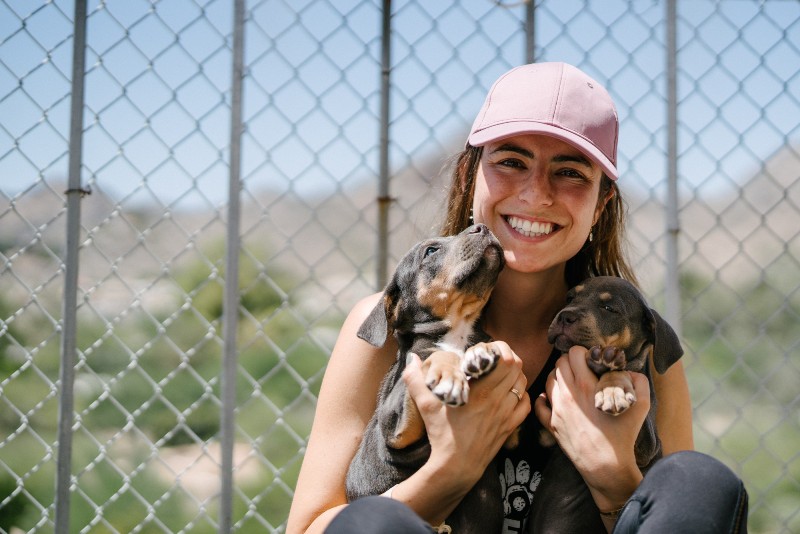
Geri Hormel
Founder and executive director of Almost There Foster Care, a nonprofit dog rescue that specializes in large-breed pups who are pregnant or nursing
Did you grow up as an animal lover? From the moment I was born, I was animal obsessed! I wanted a dog so badly, and lucky for me my parents were always happy to support my love for animals. Growing up, I had all sorts of pets—cats, dogs, rabbits, goats, donkeys, a pig and even a zorse. At 16, I started volunteering at the Arizona Humane Society in adoptions. That’s where my passion for the dog rescue world really blossomed.
What advice do you have for other young people who want to make a dream come to fruition? Never give up! There are times when you may feel like the juice isn’t worth the squeeze, but watching your dreams turn into reality will be well worth it in the end.
How can the community help Almost There? There are so many ways to help. Adopt, foster, volunteer, donate, attend our events or even just spread the word. You can find more information on us at atfcaz.org.
What influence do you hope to have on the Valley? I hope to help bring more awareness to the Valley about the importance of rescuing, spaying and neutering. Arizona has such a high volume of homeless animals. The more we can all work together to help rescue efforts, support our local shelters and spread the word about the importance of spaying and neutering your pets, the more we can help to lower the number of homeless animals that enter the shelter each year.
What are some of your free-time passions? I feel very lucky because Almost There Foster Care is my passion, so even in my free time you can usually find me doing something to help the shelter pups. When I am not focusing on the dogs, I am likely out with my flock of chickens. I am focused on raising happy and healthy chickens that lay a rainbow assortment of eggs with the brightest yolk. I am also an equestrian (although I have not been out to ride in too long!) and an occasional singer.
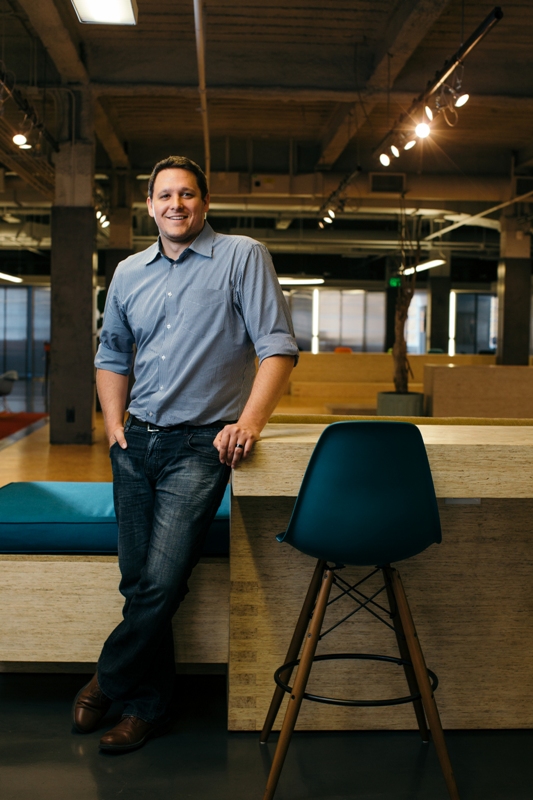
Harrison Rogers
Founder and CEO of Lexington Services and HJR Global, father of five and author of Falling Forward: The Secrets to Successful Leadership
What do you believe is the secret to your success, especially at such a young age? Being young, and also a high school dropout, I definitely don’t have a lot of things that I can list that would be a common secret to success. The one secret that has continued to provide success and accomplishments is always trying to increase emotional intelligence. No one would ever mistake me for being the smartest person in the room, but being able to sincerely show desire to align my interests with other’s interests in order to accomplish a common goal is the ultimate secret to success.
What is the most rewarding part of your career? What about the biggest challenge? The most rewarding part of my career is when my staff, a partner or a client finds a solution to a large problem or accomplishes an “unrealistic” goal. The biggest challenge for me with my career is when I have to be the one to decide or suggest when a goal needs to no longer be pursued. I myself am a forever dreamer and believe anything can be accomplished with enough hard work. So when I have to look reality in the eye and decide or suggest to someone else that we need to change course, it is the hardest thing for me.
You have hundreds of employees. In what ways do you excel as a boss to this number of people? I think the only place I excel as a boss is patience. I see many business owners who employ lots of individuals who make the decision to terminate or replace staff when they are not perfect for a position. What I’ve found is that we make that judgement call a little too quickly sometimes. When I allow my staff to make mistakes and learn from them and show that they will be additionally trained and supported in their growth, they not only feel less anxiety at work, which of course provides better production, they actually become more invested in the position.
Do you have new business ventures planned for 2020? Among several other things, I plan to add a restaurant chain and entertainment venue to HJR Global’s portfolio that not only will act as a major tenant for HJR Global’s commercial real estate properties, they will be great employers for our amazing adults with special needs. Lexington Services helps provide services to individuals with special needs, and we are excited to have businesses that will be able to provide employment to them as they transition to employment and independent living.
In what ways do you give back to the community? I am very passionate about the special needs community. I started Lexington Services in 2012 to provide a variety of professional services to individuals with special needs because I grew up with an amazing older sister who has autism. As my entrepreneurial/business career expanded into the variety of industries I am in now, I am always trying to find synergistic ways these businesses can benefit my special needs population. Whether from products or services of the businesses themselves, or providing employment for them, I always try to find a way to incorporate a beneficial partnership.
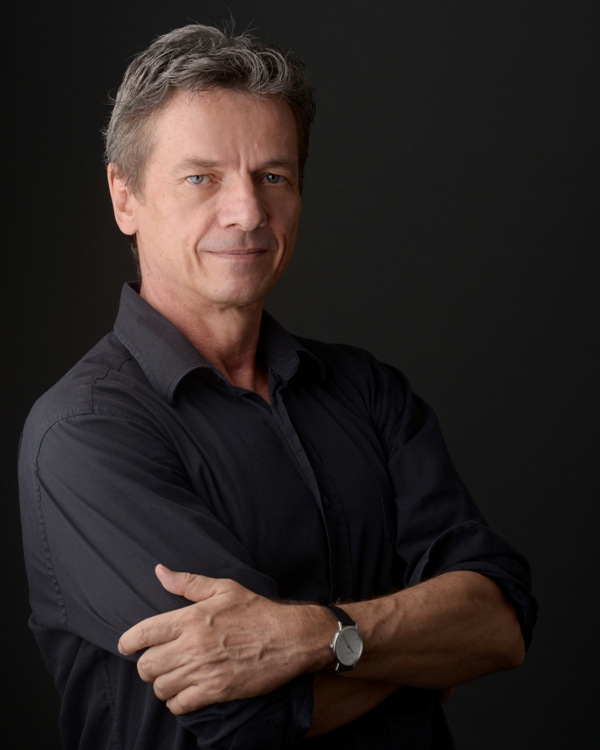
Ib Andersen
Celebrating his 20th year as the artistic director of Ballet Arizona
How did you get your start in the arts? I was a 7 years old when I auditioned for the Royal Danish Ballet School. That was the start of my ballet career. In my first professional appearance, I was cast as a blue insect with wings in a Leoš Janáček opera.
What is the most rewarding part of your career? So far the most rewarding part has been being able to do something that I love. To me, it doesn’t really feel like work. I don’t like to work; I like to play. Lucky for me, I have gotten to do that these past 20 years.
What about the biggest challenge? The biggest challenge is to survive from one day to the next in this very difficult environment. Everywhere, the arts are so starved for support and you don’t get anything for free, so having the stamina to make it through the tough times in addition to celebrating the fruitful times has also been a challenge.
Congrats on your 20th year with Ballet Arizona. Why do you think you have been so successful with the program for two decades? I am always looking forward—rarely ever looking back. It is a good attitude to have, in the sense that I don’t carry around what happened yesterday. I don’t hold a grudge about anything. In that way, I have this very selective memory. Bad things I don’t really remember. They leave me very quickly. Is that the reason I have been successful? No. Maybe I have some talent too. We have, throughout the years, been blessed with donors who have believed in us and have invested money in our work. In that way, I have been lucky.
What do you hope for the future of arts and dance within the Valley? I hope that we will be prominent in whatever the future will bring to our community—that people will know we are here and what we stand for. I mean that for all of the arts in the area as well. I hope that we evolve and change with the times in such a sprawling city.
What influence do you hope to have on the Valley? I think it’s about quality. Quality creates quality. It doesn’t go the opposite way. If you see, taste or hear something that really has an impact on you as a person, you will seek that out again. My hope is that I have a direct or indirect influence on what is being shown, and what people expect for what they go and see.
What are some of your free-time passions? Eating and cooking. I am a 24/7 person in the arts. It’s who I am. Since I have been young, I have done more than just ballet—painting and sculpture as well. I cannot just go home, clock out and have a completely separate life. It is all one. It is not that I just enjoy making art; I am just obsessed with making art. It is something I have to do with everything I get my hands on.
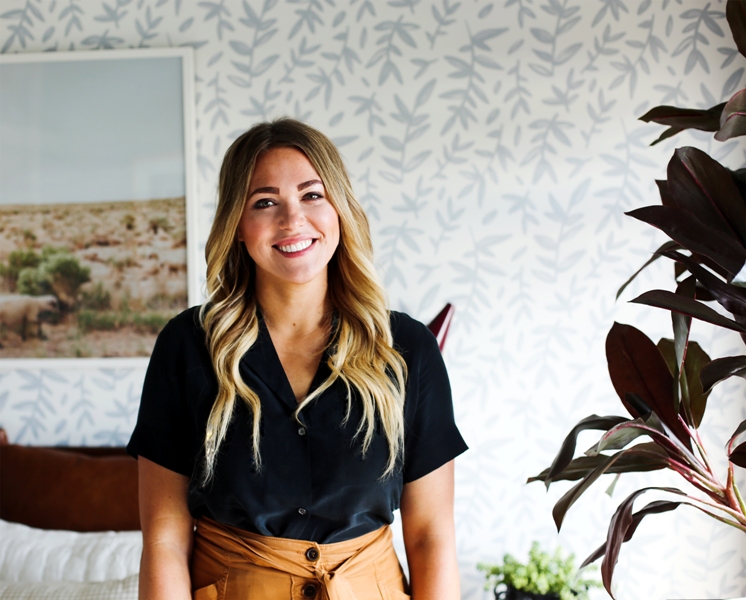
Jenny Komenda
Wildly popular design influencer with an Instagram following of more than 170,000 and founder of Juniper Home and Juniper Print Shop
What prompted your interest in design? My mom was, and is, a really talented decorator and homemaker. She would have been an amazing lifestyle blogger! I loved that she involved me in her home projects from a young age. One of my earliest memories as a young toddler is looking through wallpaper books with my mom.
Tell us about Juniper Home. We believe that a huge budget is not necessary to make a home look and feel beautiful, even uniquely so. We share design tips about the homes we rehab with care and we sell accessible home products that give a home personality and a high-end look.
Before Juniper Home, you had the adored Little Green Notebook design blog. How did social media and the blogosphere shape your career? What I love the most about blogging and social media is the community aspect. There is a sense of camaraderie and actual friendship with my following, many of whom have been watching my career grow and develop for more than a decade. They remember when I got my first really high-end design jobs too and cheered me on as I figured out navigating that world, and then when I decided to leave it after almost 10 years of residential and commercial client work. I've come full circle now and am back to sharing the design minutiae on my social platforms.
What is the most rewarding part of your career? What about the biggest challenge? I think I must have been a teacher in a past life. I love design education and any time I can squeeze a little lesson about the history of design or an interesting fact about a building material into my content, I feel like I am better serving my community. A huge challenge I have faced as a blogger and Instagram influencer is knowing where to draw the line with sponsored content. I think we are seeing some pushback from our communities about this exact thing, as the trend toward real-not-perfect is further defined. I am still navigating what this means for me and my business, but I think it's something we all will have to figure out in the coming years as this digital revolution continues to expand into every part of our lives.
You grew up in Arizona. How has the Valley changed over the years in your eyes? Arizona is so much cooler now than it was even five or 10 years ago. The caliber of products available in local shops, the delicious, fresh foods in beautiful restaurant settings, the flea and farmers markets—they can all hold their own.
In what ways do you give back to the community? I was born and raised in Mesa and feel a strong pull toward helping with the revitalization efforts happening downtown. It has been thrilling to be a part of meetings and initiatives with the city and other private groups geared toward cleaning up and making downtown a friendlier, beautiful place to live and work. We opened our studio on Main Street two years ago and have taken on a few home rehab projects in the historic district surrounding the downtown area. It feels so good to be investing back in my city in a way I feel I am uniquely qualified!
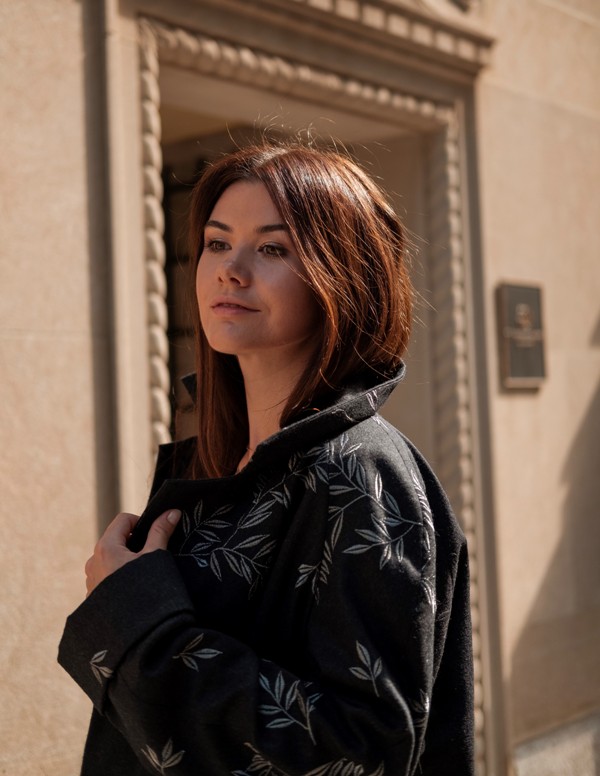
Joan Dominiqué
CEO and founder of Maison Joan Dominique
What inspired your start in fashion? From a very young age, I innately knew. For a project in second grade, I researched prominent figures who share my birthday and one of them was Donna Karan. This discovery was the first time I recognized fashion design as a possibility for a career path. My intentions never wavered since.
The brand launched just last year and has already seen great success. To what do you owe this success? Sacrifice. I traded sleeping in for 5 a.m. wake ups. I traded going out for working out. It’s about building the life I want to live. Fortunately, all my hard work was met with the right opportunity.
What do you envision for the future of your brand? We just celebrated the opening of our first by-appointment showroom in Central Phoenix. However, the greater goal is to create a home and retail store at some point. Perhaps in Scottsdale, my hometown, where it all started.
What is the most rewarding part of your career? Being an entrepreneur is the art of living beyond your comfort zone, which is where the greatest self-growth occurs. It challenges me; however, I am constantly expanding my wealth of knowledge and experience.
What about the biggest challenge? The unexpected hurdles that come in business, but that’s what keeps it interesting.
What advice do you have for other young women like yourself who have a passion they’d like to pursue? The greatest advice I can offer is put aside all your insecurities about potential failure and just start working on your goal. Be brave; be vulnerable to ask for help. You are only human; you cannot do everything. Beginning your journey is that hardest part because you create all these worst-case scenarios rather than putting that same energy you are using to think of these scenarios into building your passion into your reality.
In what ways do you give back to the community? In the past, I’ve worked with groups such as Stop Hunger Now and JCL, Connecticut chapter. My most recent endeavor is a workshop series this October with G Road and the Boys and Girls Club teaching the fundamentals of the fashion industry and illustration. I am always looking for creative ways to help the greater community.
What influence do you hope to have on the Valley? Hopefully, I can inspire some young people like myself to be brave enough to dive into creative entrepreneurship, especially the ladies!
What are some of your free-time passions? Outside of work, you can find me practicing yoga (heated vinyasa or Bikram), boxing or in the gym lifting weights.
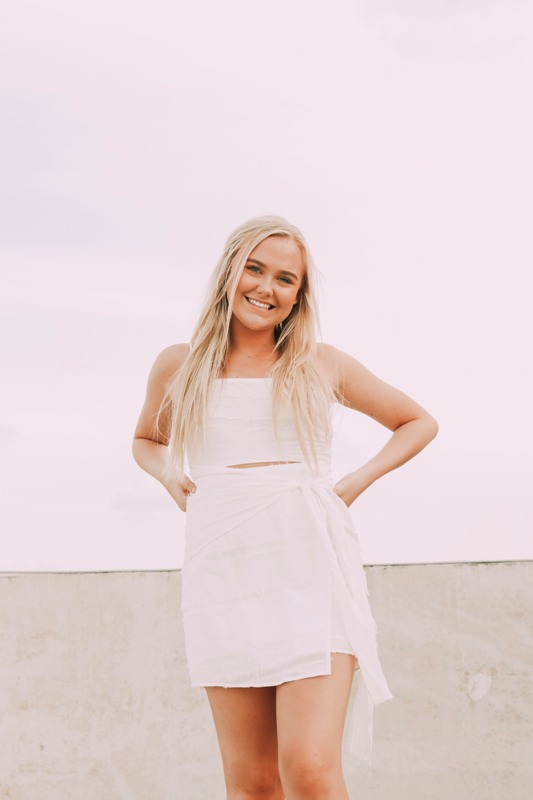
Keegan Acton
18-year-old Arizona State University marketing student who also happens to have a following of 360,000-plus on YouTube who tune in for content on beauty, lifestyle and college content
What is your dream job? My dream job would be to own my own business. I’m leaning toward an online clothing store.
What prompted your start as a YouTuber? I was 13, and I didn’t really have any friends. I had nothing to do one day, and I really liked watching YouTube so I created my own channel. I never thought it would have turned into what it has.
What was your goal in doing the videos? My goal was to have fun and have something to take up my time. I never thought it would turn into a business, but I’m really glad it did!
You have more than 360,000 subscribers. Does that put a certain pressure on you? Yes. If I think about that many people in a single room, it really stresses me out. When I think about it as personal interactions with my subscribers, it’s less pressure.
Do you have a most memorable interaction with a follower or subscriber? There are quite a few. The ones that stand out are when people get emotional about the content I’ve shared. Knowing I’ve made an impact on them makes me feel like what I’m doing is bigger than just me.
What can your followers expect from you in 2020? I’m hoping to be able to announce next year a line that my followers will be really excited about. Follow me and stay tuned!
What influence do you hope to have on the Valley? I want to inspire people that through hard work, anything is possible. I am a full-time college student, a full-time YouTuber and I still make time for an internship, my family and my friends.
In what ways do you give back to the community? I volunteer a lot in local elementary schools, a domestic violence shelter and I’m very active in my sorority.
What are some of your free-time passions? YouTube is my free-time passion. It’s also my job but it’s what I do for fun and brings me so much joy!
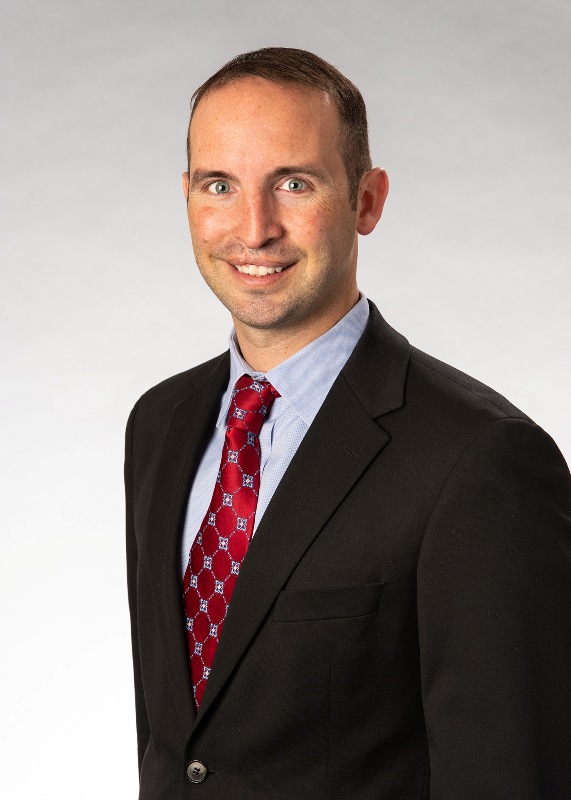
Kevin J. Walsh
Partner in the Business Law Practice Group at Quarles & Brady, father of two and one of the state’s top pro bono attorneys
How did you get your start in the law field? I studied International Peace Studies at Notre Dame, believing that ‘if you want peace, work for justice.’ This belief led me to law school at Villanova, where I volunteered in a legal clinic helping refugees. In 2007, I traveled to Syria and Jordan to assist identifying and aiding refugees. While doing this and earning my law degree, I also studied toward my MBA. Both in hand, I was ready to start a family, so began working at a law firm in Philadelphia. In 2015, I moved to Phoenix and joined Quarles & Brady. I was named partner in 2018.
Where does your passion of advocating for refugees stem from? From a very young age, I was just really fixated on social justice. It directed much of what I studied, and my eventual work with refugees.
You are one of the state’s top pro bono attorneys. What inspired you to give back to this extent? During the day, I deal with a lot of sophisticated business transactions. Many of which, I am proud to say, are helping to propel this community and those beyond it forward in a big way. But, I don’t always get to see the tangible results of our work directly. When volunteering in a pro bono capacity, you see the human impact of your work and feel the burden of what’s at stake.
As a father of two, what is the most important value you hope to instill in your children? I come from a family of education advocates, including my mother (who I lost in recent years to cancer), who served as president of the Medical University of Ohio’s board. As a result, I believe that supporting strong public education is the linchpin to solve a myriad of world issues and work to instill this in my kids each day. I want them to value the importance of education; understand how lucky they are to have such easy access to exceptional public schools; work toward their own education; help defend others’ right to education; and never stop learning.
What is the most rewarding part of your career? What about the biggest challenge? Helping people come up with creative solutions to what are often complicated problems that keep them up at night is very rewarding. The challenge is that sometimes coming up with those solutions keeps me up one too many nights.
What influence do you hope to have on the Valley? I want to help increase the quality of life in our Valley communities by fostering economic opportunities. I want to advocate for strong public schools and the implementation of policies that foster healthy communities and job growth. I want to help build an Arizona that retains our talent and draws people to be a part of it.
What are some of your free-time passions? In my spare time, I like to brew excessively hoppy beer at home, watch my often excessively bad Arizona Cardinals and Detroit Lions with my kids and relive the glory days of my youth by playing Mario Kart.
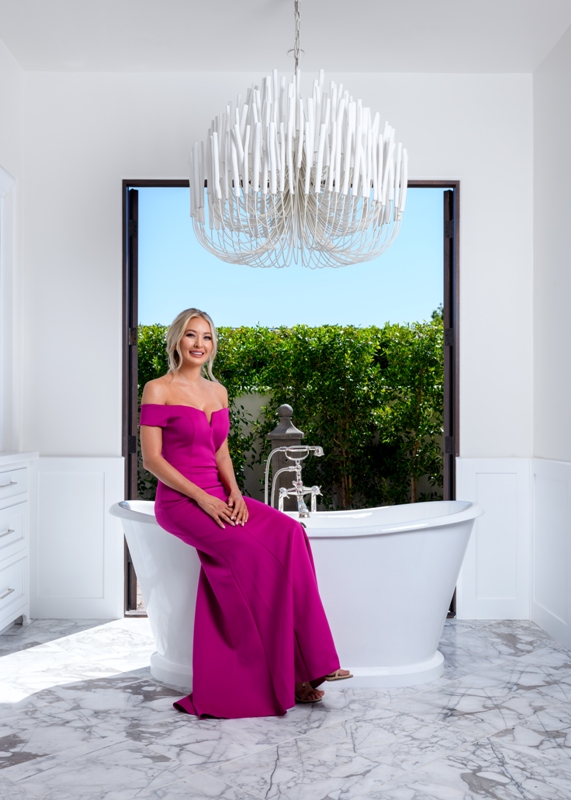
Brad Olson
Lauren Wallace
The co-founder of MDF Development, and the company’s lead interior designer, is making waves in the design community as the new face of Paradise Valley real estate
What attracted you to the design/build field? I have always loved interior design, but now as a design/builder I can be more intimately involved in the entire process. Interior designers typically go to job sites only a handful of times, and I started to feel a disconnect from the process as a whole. Building has given me that new perspective—and the challenge of executing my design. Now I can step back and say, ‘I dreamt it, and then I built it.’ And that’s a powerful statement.
What do you believe is the secret to your success? Hard work and commitment. I gave even my earliest jobs my entire focus and dedication, and still do to this day. I believe I have talent, but no amount of talent or luck makes up for relentless commitment.
Why did you decide to focus your work in Paradise Valley? Luxury has been my background since day one. It requires a completely different skill set to invest in this part of the market. We have a very unique team with strengths that are perfectly suited to this and, collectively, we are comfortable with the large amount of risk speculative building here entails. We have also worked in parts of Scottsdale and Arcadia.
Your properties can garner more than $2 million than other homes in the same area. Why is that? We are very particular about the projects we take on, but when we commit, we go all in. We are not cosmetic remodelers—we completely transform the property from the inside out. I put myself in the shoes of the future owners.
What makes a project successful? There is no better feeling than handing the keys over to our clients. This new home is going to be the backdrop to some of their most cherished memories. It’s an honor to be a part of that, and a responsibility I don’t take lightly.
What is the most rewarding part of your career? What about the biggest challenge? Starting and running a business is such an interesting way of life. I love the Lori Greiner quote, “Entrepreneurs are willing to work 80 hours a week to avoid working 40 hours a week.” It can be demanding but there’s a deep sense of freedom and joy in being completely self-supportive and knowing you’re building something of value.
What influence do you hope to have on the Valley? I hope to be a role model to other young women that if they sacrifice at a young age, they can achieve greatness at a young age too. I want to tell them: If you want something, don’t let anyone tell you you’re too young or too inexperienced. Do whatever it takes, work harder than everyone else, and doors will open. Surround yourself with people you admire. I had an amazing mentor as I was just starting out, and I’m very grateful for those experiences.
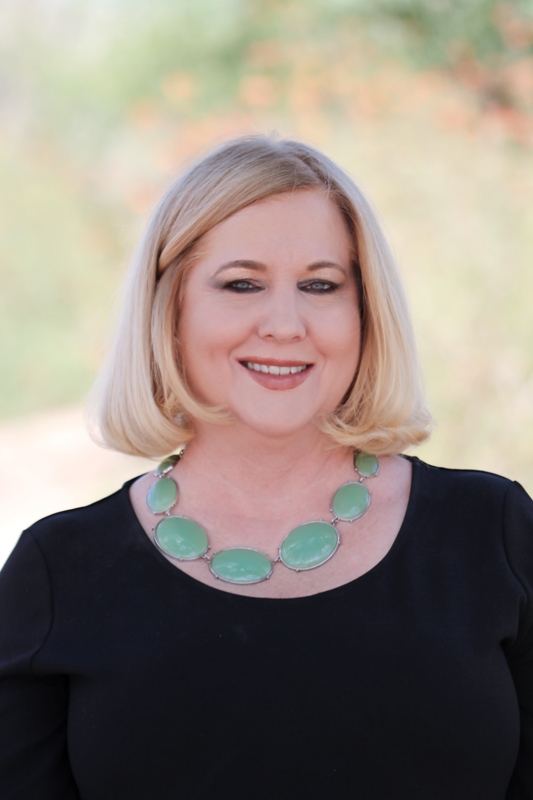
Laurie Haas
Agent with luxury personal insurance brand, narrative, and the first agent in Arizona to be awarded the designation of Certified Advisor of Personal Insurance
What prompted your interest in the financial field? I actually first applied for a job in insurance on a whim! But I quickly discovered I had an aptitude for it and knew I could make this an exciting and rewarding career. I love helping people, and insurance can be confusing, especially for successful individuals and families. I was fueled by my desire to become an expert in luxury personal insurance and to be a trusted advisor and partner to my clients.
Tell us about narrative. narrative is the way the luxury personal insurance-buying experience can and should be. The opportunity to offer bespoke services and being empowered to delight our clients at every opportunity was intriguing to me and, quite honestly, refreshing in a business not known for it. narrative’s president, Eric Gordon, has been a good friend of mine for many years, and I knew I wanted to be part of building on the foundation Eric and his partners had already established in Denver.
Do you have a client story that is particularly memorable? There are so many! But one that really stands out to me was starting from scratch with a client who was very unsure of what his insurance needs were. After we designed and built his program, he told me it was the first time he felt at peace—he knew that he was properly insured. Insurance is a just promise until your client needs it. Being confident that the right coverage is in place at that time of need is personally rewarding to me.
What is the most rewarding part of your career? What about the biggest challenge? Personally, it is all about hospitality and empathy. I genuinely enjoy helping people, guiding them and looking out for them. Professionally, I have served on the National Councils for several insurance companies. Being respected for my knowledge and thought leadership on how to improve the industry has been incredibly rewarding. Additionally, being the first agent in Arizona to complete the Certified Advisor of Personal Insurance designation at Wharton is my biggest professional achievement. This was also probably the most challenging because I completed this 15-month program while working full time and being a wife and mom. I was also planning our daughter's wedding at the time!
In what ways do you give back to the community? Causes supporting children's health are near and dear to my heart. Additionally, I have a huge soft spot for animals, and my family supports animal rescue. We have rescued many dogs and cats over the past several years. And we are very active with my daughter’s school through fundraisers, charity events and volunteering.
What influence do you hope to have on the Valley? Many large agencies and insurance companies are making their homes in Arizona. Unfortunately, most of them are more concerned with ROI over ROL (return on life). I am looking forward to helping attract and grow the careers of younger professionals interested in specializing in luxury personal insurance. Insurance is not often thought of as an exciting or creative, but it can be incredibly rewarding on so many levels. If I retire from this industry having attracted future generations to it, I will be very happy.
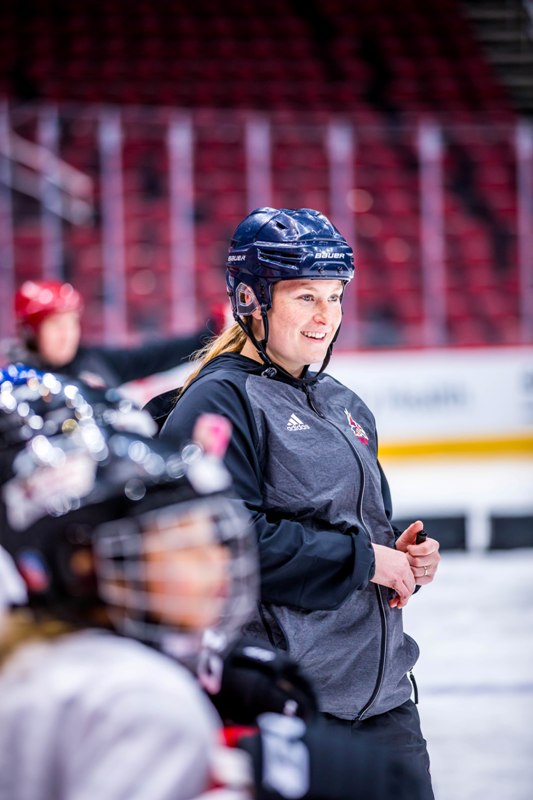
Lyndsey Fry
Olympian, hockey ambassador, special advisor to the president/CEO of the Arizona Coyotes and coach of Small Frys, the first NHL-sponsored girls-only program
What prompted your interest in hockey? I actually fell in love with “The Mighty Ducks” movies as a kid. My dad finally brought me some plastic skates, and I was hooked.
Tell us about Small Frys and Kachinas. The goal with Small Frys is to take girls who have been through the Coyotes’ Little Howlers program and get them on the ice with an all-female staff throughout the summer. This enables them to have a girls-only social experience, get inspiration from female role models and ultimately build their confidence. Kachinas is a full-blown youth hockey association that is exclusively for girls and falls under the Arizona Coyotes umbrella. The hope is to continue to build out the association so that any girl who wants to play hockey with other girls in Arizona has a place to do so.
What is the most rewarding part of your career? What about the biggest challenge? The most rewarding part of my career thus far is the impact that I have been able to have on not only the girls’ hockey community in Arizona but also throughout the Western U.S. I have been fortunate to be able to run multiple camps outside of Arizona in places like Montana, New Mexico and Utah. It’s incredible to think that I’ve had the opportunity to help and inspire close to 1,000 players in my relatively short career, and I look forward to continuing that momentum. I think my biggest challenge is that I just want to do it all!
Tell us about your 2014 Winter Olympic experience, when you won silver with the US women’s ice hockey team. Honestly, the best part of the entire experience for me was being able to be in Sochi with my family there watching. As a little girl from Arizona, I wasn’t supposed to make it that far. But my family gave me every opportunity to get there, and I will be forever grateful to them for that. Beyond having my family there, the other great thing about my Olympic experience is that I knew that no matter if we won a medal or not, I would be able to come home to Arizona and change the face of girls’ hockey forever with what I had accomplished.
What role do you think team sports play in a child’s life? I tell people all the time that the reason why I am so passionate about getting kids into hockey is because everything I’ve ever had in life, from friendships to family memories to education to job opportunities to life skills, has all come from hockey. I don’t think it’s possible to get that from many other things as a kid growing up in today’s world. Sports offer a unique community and teach things like teamwork, overcoming adversity and respect.
What advice do you have for girls and young women who wish to become successful athletes? Honestly, work hard and have fun. If you do those two things, you will find your version of success and your sport will never feel like work.
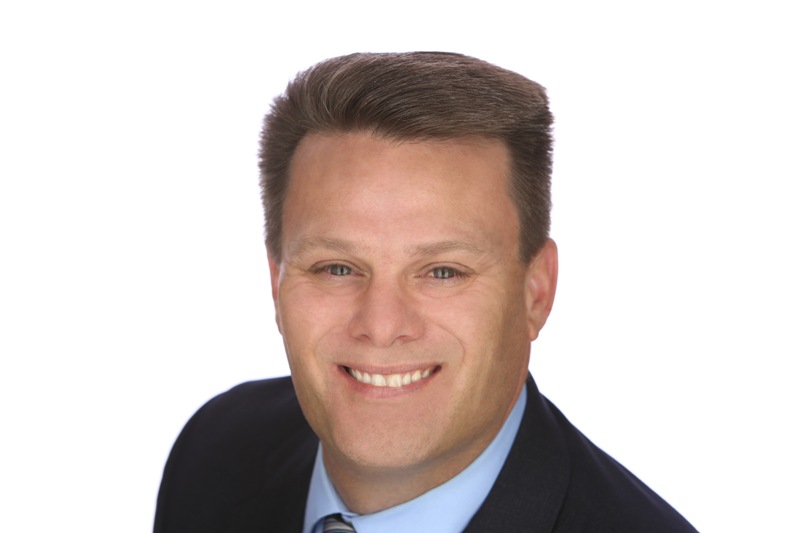
Marc Garcia
President and CEO of Visit Mesa, which recently became the first-ever destination marketing organization designated as a “Certified Autism Center”
What does this designation mean for Mesa and Arizona as a whole? Exactly that, Mesa is first. This initiative to become autism-certified, and our efforts to expand this beyond just our organization, is consistent with who and what Visit Mesa has become over the past several years. We strive to be on the forefront of the latest research, technology and trends in our industry–adopting best practices–and this movement is nothing different. We are recognizing where the marketplace is going and being first is consistent with the culture of our company.
Your child was diagnosed on the spectrum. What does this designation mean to you, personally? Like any parent, when you receive the news that we did that your child has autism spectrum disorder and that the diagnosis is severe, your world is rocked. You enter a state of disbelief. Naturally, that leads to so many questions: Who offers services? Where do I go? The next phase of discovery for us was ‘What can I do?’ and this really stemmed from experiencing for ourselves the strange looks from others when visiting a restaurant or hotel while traveling with Mason. The experience makes you feel uncomfortable and unwelcome. Recognizing that I can potentially do something about this was all part of the journey, and on this path, I really examined what I could do within our industry to see what attractions, restaurants and hotels would be open to this community. What we are doing is beyond autism-friendly. Certification takes it to the next level. It’s a top-to-bottom educational platform that gets to the heart of the matter which is recognition of what this disorder is and what it looks like. This way people in our hospitality industry can identify when their guests might need additional support, compassion and understanding.
In what ways do you hope other visitor industries follow in Visit Mesa’s footsteps? I hope we get to a point where every destination is autism-certified. This truly comes from my personal belief that this country is not fully informed or aware of how our service levels in all facets of society will change. We don’t have a choice; we all must move in this direction.
What do you hope for the future of tourism within the Valley? For Mesa, this is just the beginning. We are in phase one of what will likely be a long journey in our efforts for total inclusivity. This moves beyond ASD and other sensory disorders but for all disabilities. As it specifically relates to ASD, the focus is on awareness of what we are doing in Mesa and making sure our partners and their front-facing employees are trained and keeping up latest research, trends and training methods. We can see this eventually making employment connections for people with ASD in our industry. More generally, Mesa is a dynamic city with a diversified economy that will see tremendous change in the coming years with an already great infrastructure in place.
What influence do you hope to have on the Valley? We are already seeing the influence across the city with both the Mesa Chamber of Commerce and Mesa Parks and Recreation and Mesa Fire Department immediately following in our footsteps. The Arizona Office of Tourism completed certification for their staff this summer and now we are seeing businesses outside the industry showing sincere interest in becoming autism-certified and reaching out to us to learn more. The groundswell is moving well beyond our organization which has been by far the biggest reward.
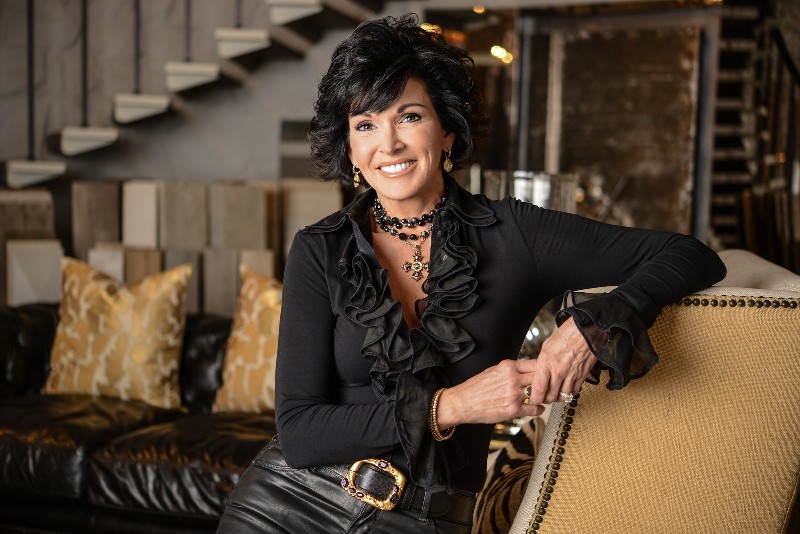
Missy Murray Anderson
Founder and owner of House of Anderson, collaborator with Lyle Anderson Companies and passionate philanthropist
How did you get your start in the design industry? I grew up in the art business with my parents opening the first gallery in Scottsdale in 1968. I bought my father’s gallery in 1990 and while hanging artwork in the homes of clients, I also began helping them with accessories and furniture. In 1994, I met my husband Lyle and I subsequently had the opportunity to provide art and décor for the clubhouse, spa and casitas at his new community, Las Campanas in Santa Fe. When we married in 1998, I sold my gallery and followed my true passion as Lyle and I worked together on many residential and clubhouse design projects in our communities in Arizona, New Mexico, Hawaii, Scotland and Mexico. In 2015, I continued to evolve my love for design and creating beautiful environments by opening the House of Anderson, a complete design gallery of the finest furnishings and finishes for both residential and commercial projects.
What is the most rewarding part of your career? My greatest joy and motivation is helping to create environments of beauty that enhance people’s lives now and for generations to come.
You were born and raised in the Valley. In what ways have you seen the Valley evolve over the years? I was born and raised in Scottsdale and literally grew up on Main Street in my parent’s store and gallery. It’s special for me to continue this legacy by having my own business on Main Street. I’m amazed with the Valley’s growth, especially in North Scottsdale. Mayor Herb Drinkwater personally worked with developers like my husband to assure the quality of high-end developments. Herb had a vision of growth to make Scottsdale one of the most beautiful places to live while also maintaining the history, charm and architecture of Old Town Scottsdale which remains today.
You are very involved in local philanthropy. In what ways do you give back to the community? My parents have always been very philanthropic, and I am fortunate that they instilled those same values in my sister, Jinger Richardson, and me. I have enjoyed working with Childhelp, Florence Crittenton, Trends Charitable Fund and the Heart Ball, as well as many other nonprofits over the years. When working with a charity, I always strive to understand its mission as well as personally interacting with the people they serve. When in a leadership role in many of these organizations, I always try to give 100 percent while focusing on fiscal responsibility and measurable results. I am passionate about making lasting difference and also helping organizations to grow responsibly.
What lessons do you hope you pass on to your children and grandchildren? I try to show by words and example that living a life of honesty with an attitude of love and gratitude to God each day will always bring the greatest joys of a life well lived. This past year specifically has been one of the most difficult times in my life dealing with some very challenging health issues. I talk to my children and grandchildren about everything I’ve learned through this experience both good and bad. As difficult as it has been, I have received one of the greatest blessings in my life in what I call my course correction. I’ve had to deeply examine what is truly important in my life and how I spend my time. I’ve also learned what it means to live life more in the moment and to be grateful for each and every experience—large and small, good and bad. The greatest blessing that I am forever grateful for is experiencing the amazing love and support on an entirely different level from Lyle, my family and my dear friends.
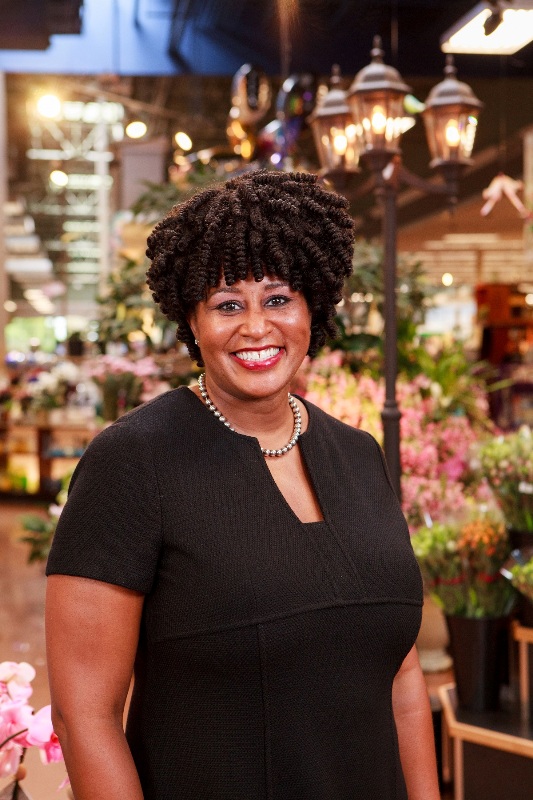
Monica Garnes
President of Fry's Food Stores, and the first African-American division president in Kroger's history
What accomplishment are you most proud of in your time as the president of Fry’s Food Stores? I became president of Fry’s in February 2018 and am most proud of our associates’ contributions. We have many friendly, caring and dedicated associates whose work helped Fry’s get selected as the 2019 Business of the Year by the Greater Phoenix Chamber. The award really brought into focus our work, not only as an economic driver, but as an advocate for diversity and inclusion, our broad support of the community, our commitment to Arizona-based businesses and farmers, and our on-going innovation. I’m also very proud of our work to end hunger in Arizona’s communities and eliminate waste across our company as part of Kroger’s Zero Hunger | Zero Waste. Last year, we donated 9.4 million meals through food recovery, donations and financial support to food banks and feeding programs. We also diverted 8 million pounds of food waste from landfills to livestock feeding and compost programs, used 44.9 percent less electricity and increased recycling on cardboard and plastics.
What makes a successful leader? Leaders that I admire create a vison that makes you want to follow. They are trustworthy, great listeners, courageous, passionate, empathetic, inspirational, decisive, humble and live their values every single day. Successful leaders create an environment where people feel valued and a part of the team, where their ideas and opinions count.
What advice do you have for girls and young women who want to hold business leadership positions? The sky is the limit. There are so many opportunities now for women in business. Listen and learn all you can. Do not be afraid of a challenge. Challenges push you and help you grow at an accelerated pace. Find your passion and show up as your authentic self every single day. Lastly, the quote I live by is: “Call it a clan, call it a network, call it a tribe, call it family. Whatever you call it, whoever you are, you need one.” –Jane Howard
In what ways do you give back to the community? I serve on The Phoenix Suns Charities board, St. Mary’s Friends of the Food Bank Advisory Council and The University of Rhode Island College of Business Dean’s Advisory Council as well as at various volunteer projects throughout Arizona. I have also created the Monica J. Garnes Endowment Scholarship for The University of Rhode Island College of Business to support students in need who dream to earn a college degree.
What influence do you hope to have on the Valley? Every day, tons of food is thrown away in this country, yet one in eight go hungry. In Arizona, one out of four children will go to bed hungry tonight. This is a fundamental absurdity. I hope to bring influence and solutions surrounding hunger and food waste because I believe that if we would be more intentional in our food use and waste, and develop creative solutions, we could end hunger in our community.
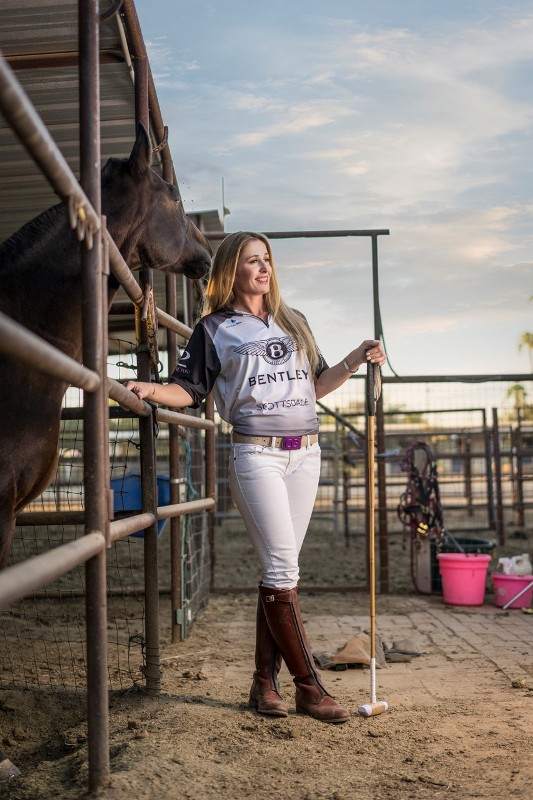
Natalie Grancharov Camacho
Arizona Polo Club Women’s League Chair
What prompted your interest in polo? What girl doesn't love ponies?! I grew up in Silicon Valley, not riding but always loving horses. When I went to college at UC Davis, I discovered a polo team and the rest is history. Once I came to Arizona, I connected with the Arizona Polo Club.
Tell us about the Bentley Scottsdale Polo Championships (a k a The Polo Party). What’s new this year? This year I am super happy that we will be honoring the US military by hosting the USPA General Patton Cup; this polo match will be played by veterans and families of veterans. Our main event match will also feature Nacho Figueras, who is well-known as the face of Polo Ralph Lauren. There are also The Polo Party’s signature events within the event like the Canine Couture Dog Fashion Show, the World’s Longest Catwalk Fashion Show presented by Phoenix Fashion Week, a half-time rugby match, a preview of 2020 Barrett-Jackson’s Car Auction and halftime performances by the Scottsdale Arabian Horse Show. One of my personal favorites is the fried chicken and Champagne—the best combo ever!
What is the most rewarding part of your career? What about the biggest challenge? My career is actually completely outside of the horse world at Intel Corporation. I work as an engineering manager in one of the most advanced manufacturing sites in the world. Every day is a challenge and something new, but that’s what happens when you are making computer chips with more than one billion transistors on them.
What advice do you have for girls and young women who wish to become successful athletes? Do what you love! Don’t do a sport, including polo, to prove something to anyone but yourself. Find your passion, follow it and don’t ever let anyone get in your way of what you are trying to achieve. If you think your passion might be polo, come out to our event in November and sign-up for a polo lesson. We are also hosting a special clinic this year after the big event.
In what ways do you give back to the community? I try really hard to promote the goodness of polo, not only in Arizona, but in the US. There are many US polo women that have the same mission: get young women out to the field and try the sport. It’s so unique that men and women can play on the same field as equals, and this is something my club and I really try to embody. I work with my club to host women’s polo events to benefit local causes as well. This year, at The Polo Party we will have a special charity match to benefit Southwest Wildlife.
What influence do you hope to have on the Valley? I am hoping that everyone can come and see a match at The Polo Party event and see how amazing this sport can be. But even more so my club and I really love to highlight our polo horses. Eighty percent of them are off-the-track Thoroughbreds; this means that they had a racing career at a young age and then are bought or rescued at the end of their career for polo.
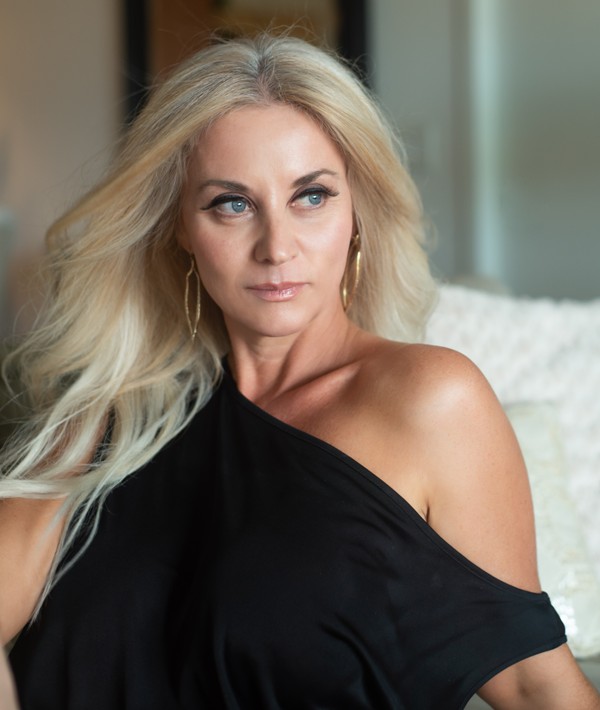
Nichole Kathryn Studios
Niki Woehler
Passionate and prominent Valley artist who specializes in acrylic on canvas and resin
How did you get your start in the art industry? Jumping into art was a monumental leap of faith, and my start is entirely thanks to my wonderful friends and family. They are the ones that encouraged me to pursue my passion. They not only gave me courage, but they were my first customers, my biggest advocates.
What is the most rewarding part of your career? I can’t choose one, so I will share my top three. 1. Seeing the joy on my client’s face when we hang their art in its new space. 2. Being able to teach my children that you can do and be anything you want in this lifetime. You just have to have courage, work hard, have integrity and believe in yourself, even when that little voice in your head says otherwise. 3. A completely unexpected reward of doing what I love is inspiring others to have the courage to do what they love.
What are your thoughts on the Valley art scene? If I’m being honest, my feelings are a little bit of a mixed bag. It was disheartening to watch so many of the galleries close their doors, especially in Old Town; however, there seems to be a ground-level revitalization happening, and that is invigorating! More and more, I’m seeing art being celebrated, and local artists being given a voice. The Found:Re, dedicated to showcasing art from local artists, opened a couple of years ago, and it’s amazing to see. From the new murals popping up all over the city, to partnerships with local businesses infusing their spaces with original art, to the airport and light rail showcasing local artist talents, and magazines featuring established and emerging artists, it’s all very exciting.
What do you envision for the future of the Valley as a whole? I see young people coming for a great education at ASU and the downtown U of A campus, and they aren’t leaving anymore. They’re staying. With youth comes vitality and growth. We’ve all seen our restaurant scene becoming world-class right before our eyes. I see communities growing and flourishing. It’s a really exciting time to live here.
What influence do you hope to have on the Valley? Personally, I would love to be a source of inspiration for anyone who's on the fence about following their dreams. I’ve had quite a few brand new artists see my story somewhere and reach out with all sorts of questions, and I’m always incredibly honored when they do. I think we’re all here to help each other, and I’m more than happy to share what I’ve learned along the way.
In what ways do you give back to the community? In addition to donating paintings to some of the Valley’s wonderful charitable organizations like Make A Wish, Phoenix Children’s Hospital and The Leukemia and Lymphoma Society for their annual galas, I am the Art Explosion lead for Gigi’s Playhouse. Every month, I have the privilege of teaching art to kids with Down Syndrome. Each month we focus on a different artist/medium, and the kids go home with their own masterpiece. It’s one of the most beautiful and rewarding things I get to do.
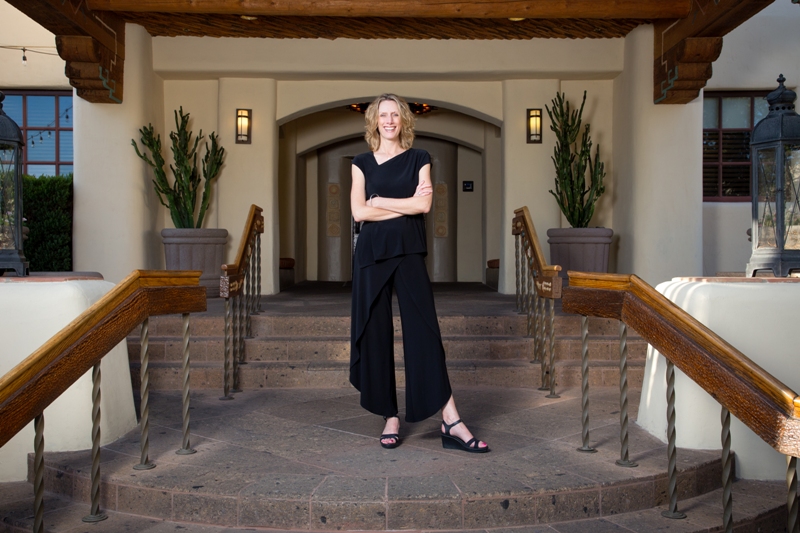
Paige Lund
Newly minted general manager at JW Marriott Scottsdale Camelback Inn
How did you get your start in the hospitality field? My first job was a bus girl at a Country Kitchen in Mound, Minn. I worked there from age 13 all the way through college. I fell in love with serving others and making them smile for the short time they were there. We had many regulars, and I loved getting to know them and making friends over time. I enjoyed the pace, the variety in each day and simply taking care and hosting others. Due to this experience, I decided to major in Hotel and Restaurant Management as I dreamed of owning my own restaurant.
Why do you think you have been so successful in your career? First and foremost, due to the grace of God. Secondly, because I found something I absolutely love. Third, I had some pretty amazing role models (my parents) who taught me the value of hard work, giving everything your very best, surrounding yourself with people better than you, service and an attitude of gratitude. Lastly, I have been very fortunate to have had many leaders who have believed in me and, as a result, trusted me with great opportunities. I never wanted to let them down.
Congrats on your new role! What do you think is the key to getting more women in leadership roles in hospitality management as well as across the board? Thank you! I think women simply need to trust themselves and go for it. We tend to wait until “we are ready” or until “we know everything” when, really, there is no such thing. We are never really ready, and we will never know everything. Women truly are great leaders but we must have confidence. In my opinion, leadership is primarily instinct and emotional awareness—both qualities that come naturally to women.
What do you envision for Camelback Inn? Camelback Inn has received a lot of renovations over the past few years. I look forward to finishing the rest of the renovations and bringing this historic and iconic resort into the 21st century all the while honoring its great history and passion for service. This resort represents so much to so many and I look forward to leading its next chapter as we attract a new generation of customers.
In what ways do you give back to the community? Giving back is a true passion of mine. Whether it be professionally through serving on boards, mentoring students and young leaders or offering the hotel or resort I lead for good use within the community or personally through tithing, adopting families, serving on boards or volunteering. My mom and dad taught me at an early age the value of serving and, when service is in my life, I am centered and at peace.
What influence do you hope to have on the Valley? To inspire gratitude, courage and, above all else, love in all the leaders that I serve.
What are some of your free-time passions? No. 1 is being with my husband Clark and my two beautiful daughters, Allyson and Abigayle. Traveling as a family and experiencing new places is at the top of the list. I also enjoy serving, watching movies, leadership books and seminars and connecting with family and friends.
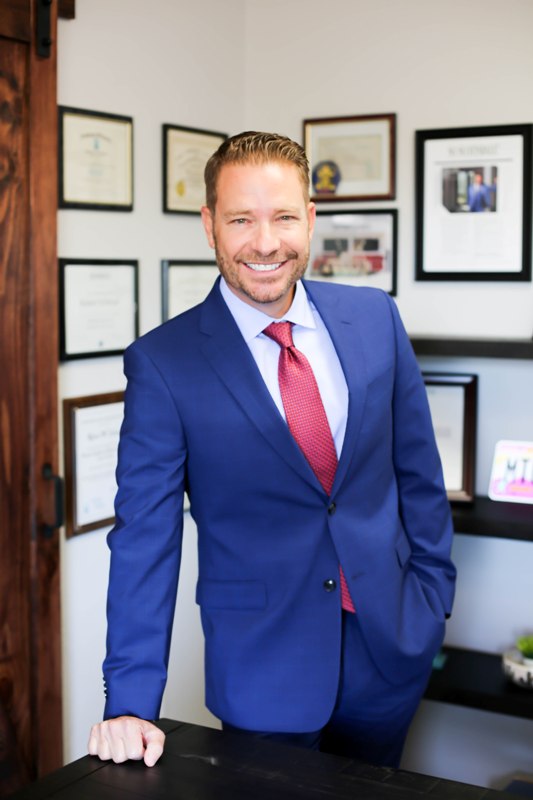
Carly Jean Photography
Robert W. Schreyer
Arizona market leader (a k a The Mortgage Man) with Camelback Mortgage who lives by example for his clients and his children
How did you get your start in the mortgage business? My father was in the mortgage business when I was growing up, so I was able to see first-hand what it was like to help others through one of their biggest financial events of their life. He loved his job and made so many good friends through it that I always knew that one day it would be the career for me.
What is the most rewarding part of your career? What about the biggest challenge? The most rewarding by far is when I get to see how happy my clients are when we close their loan. I love being a part of the different seasons of their lives by walking them through the loan process. I love to get to know my valued clients and have long friendships with many of them. One of the biggest challenges for me is when I miss out on an opportunity to help one my friends, family or past clients with a home loan. I would love to serve everyone!
You’re a full-time single father. What lessons do you hope to pass on to your children? The most important lessons that I have taught and continue to model for my awesome children is to always honor God in everything and to always do the right thing. By doing those things, everything else will fall into place and they will be successful no matter what.
In what ways do you give back to the community? I serve on the board for the Boys and Girls Club of Greater Scottsdale, which is an awesome organization that contributes greatly to our local kids. I co-lead The Modern Disciples group, which is a men’s group, and I am honored to serve at my church. I am always looking for ways to serve or contribute even if it is only a one-time event or fundraiser. Imagine the impact we could have on our community if all of us served just one time per year somewhere?
What influence do you hope to have on the Valley? I hope that through my actions and my attitude I can have a positive impact on my surroundings and the people I interact with each day. Whether at home with my family, or out in the marketplace, I have the biggest influence when I lead by example by having a positive attitude and outlook on life no matter what happens.
What are some of your free-time passions? I am a water guy so wake-surfing on my boat and hanging out on any beach is the best! I also love snowboarding and going up north to the cabin in the cool pines. I enjoy hiking our beautiful desert mountains and doing brunch, but most of all hanging with my kids and awesome friend group makes for a great life!
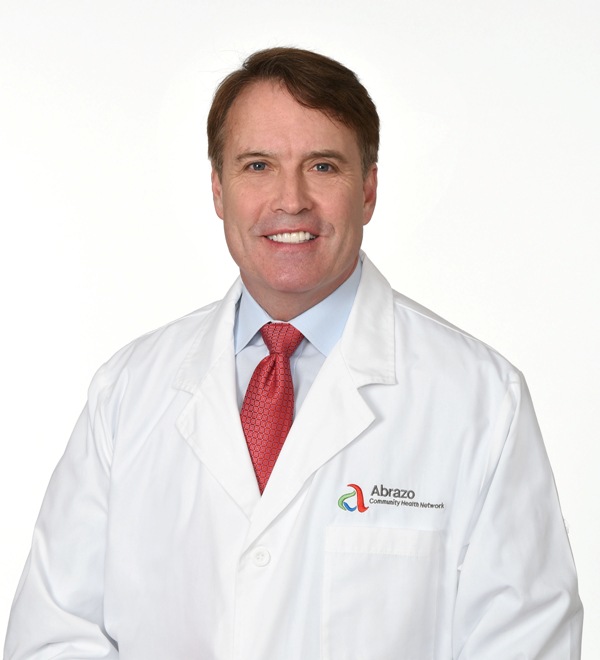
Dr. Ronald Chamberlain
Chief of Surgical Oncology and market medical director of Oncology Services at Abrazo Health, where he is one of the few surgeons in the nation performing heated intraperitoneal chemotherapy (HIPEC) for advanced abdominal cancers
How did you get your start in the medical industry? When I was growing up in Pittsburgh, I wanted to be a minister, but when I was 16, my mother became very ill. She was hospitalized for more than a year, and during that time, she had 11 operations. But she recovered and she lived for another 40 years. That year changed my life purpose. I could either provide therapy to the soul or provide therapy to the body. I believe the work I’m doing now as a cancer surgeon does both.
What is the most rewarding part of your career? Many of my patients have advanced cancers, and it’s always a great feeling to know that I played a role in curing them, but it’s even more rewarding when I see them return to their normal lives. I’ve been very fortunate in that, in the 27 years that I’ve been a physician, I’ve traveled to 69 countries to perform complex surgical procedures. Along the way, I’ve met wonderful patients who have become close friends, and I’m grateful to be part of their journey.
Tell us about HIPEC. Do you think more hospitals will be offering this in the future? HIPEC is a treatment for patients with advanced abdominal cancers, such as ovarian cancer. It involves surgically removing a tumor and then dispensing an extremely high dosage of chemotherapy directly into the abdomen. The goal is to kill remaining cancer cells and improve drug absorption and effect with minimal exposure to the body. I perform HIPEC procedures at Abrazo Central Campus in Phoenix. Unfortunately, I don’t see more hospitals offering this because of the expense involved, the time commitment—surgeries last up to 10 hours—and the need for trained oncologists.
What do you envision for the future of Valley medicine/healthcare? I hope that we move toward more comprehensive centers of excellence. Phoenix is among the largest cities in the nation, and we need a maturation of medicine, a commitment to research and specializations in care. Right now, we have many hospitals trying to do a little of everything, but studies show outcomes are better when medical teams specialize in an area, such as oncology, cardiology, orthopedics and other lines of service. I hope we get there in the next five to 10 years.
In what ways do you give back to the community? I travel overseas on mission trips two to three times a year, and I serve as a youth pastor. I am also a Navy veteran, and in 2007, I was honored as the first Philanthropist of the Year by the New Jersey chapter of the American Medical Association.
What are some of your free-time passions? I love to hike and be outdoors. I’ve climbed Mount Kilimanjaro, which was more of a trek. I also like to do a lot of obstacle races, like Spartan races, and marathons. When I’m not working, I like to spend time with my beautiful wife, who is a colorectal surgeon, and our amazing two-year-old son. I also love to travel and spend time with my daughters, and my brother and father when they visit or we see them.
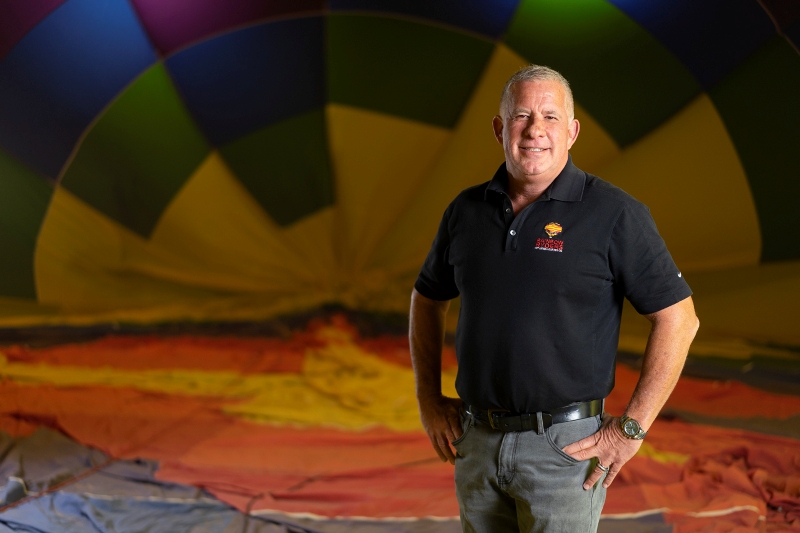
Scott Appelman
Founder and president of Rainbow Ryders, Inc., the largest balloon ride business in the United States, and next year’s inaugural Scottsdale SkyFest and Balloon Glow event
How did you get your start in the ballooning industry? Living in Albuquerque as a kid and for four decades, I was exposed to ballooning with the [Albuquerque International Balloon] Fiesta and friends. I crewed for a while in my teen years. I finished my degree at Anderson School of Business at UNM, I learned how to fly, loved it and was fortunate enough to be able to turn my hobby into a career. I started with one two-passenger balloon and now have 33 balloons, and fly over 30,000 passengers per year in Arizona, New Mexico and Colorado.
What is the most rewarding part of your career? Getting to be part of so many memories that we create for people.
Rainbow Ryders is the largest business of its kind. Why do you think you have been so successful in your career? We simply will not do second place. Our whole team wants to be the best, with safety, professionalism and providing an unforgettable experience for our passengers. We also take our commitment to the destination very seriously and partnering up with all destination marketing entities to further promote the destination.
What has been most noteworthy about the evolvement of your field since you started in the industry? We have raised the bar for higher standards for pilots and crew members. Although we are FAA commercial pilots, we have standards and requirements much more demanding than law requires. Also, the evolution of the equipment and technology we use has brought the sport to the highest level of safety, endurance and performance.
How has social media transformed your business? I don’t know; I’ll tell you tomorrow with the newest changes! Social is a full-time requirement in today’s world for success to reach across all generations and potential passengers.
What do you envision for the future of the Valley as a whole? We are loving it here in the Valley. I see an amazing future with great success for the community. Tourism is a huge business here. I see the destination continuing to grow and developing which brings success hand-in-hand with the residents of the Valley. More attractions, restaurants and events is a win/win for all.
What influence do you hope to have on the Valley? We are starting a new balloon event called Scottsdale SkyFest and Balloon Glow on Thanksgiving weekend 2020, with over 50 hot air balloons flying in the morning, balloon glows at night, arts and crafts holiday extravaganza, concerts, kid’s zone, VIP and sponsor hospitality. We intend to bring the best, most modern balloon event for pilots, spectators, sponsors and the community with our extensive experience with the Albuquerque International Balloon Fiesta and Labor Day Liftoff in Colorado Springs
In what ways do you give back to the community? We support many charities including the Cystic Fibrosis Foundation, Make a Wish, veteran-based and animal-support charities all the time. We are an active and long-time partner with Arizona Office of Tourism, Experience Scottsdale and Visit Phoenix to always help promote the destination.
Shawn Byrne
Owner and CEO at My Biz Niche LLC with a focus on creating jobs and happier employees
Have you always been an entrepreneur and business-minded? In sixth grade, I earned my first $200 buying hacky sacks for $1 to $2 and selling them at school for $5 to $10. Then at 13, I built my first computer, and it would break so often that I had to teach myself how to fix it. By high school, folks in the neighborhood were paying me to fix their computers, and that eventually led to me developing Web sites and launching my career.
What is the most rewarding part of your career? The most rewarding part of my career has been the chance to work with talented individuals and giving them opportunities to grow and succeed. I enjoy motivating and supporting my team both at work and in their personal lives to achieve their goals. At the end of the day, the client is trusting us with the livelihood of their business. Our clients receive the benefits of our team's tenacious attitude to win and see the results of our efforts in their ROI. It fills me with pride to see my team just as passionate about our client's success as their own.
Why do you think you have been so successful in your career? Definitely my perfectionist personality. I don’t like screwing up, so I will do as much research on a topic or industry as it takes to fully understand it and be confident discussing it. I’m extremely competitive and quietly laser-focused, and these qualities have always given me the edge and motivation to be the best in this industry. A big key to my success is that work is truly my favorite hobby. I don’t watch movies, TV or sports. I also am genuinely curious about people, so I prefer to talk about meaningful things when I have the opportunity to meet and interact with others—values, goals, strengths and opportunities. I’m not much for small talk, like where people went to school or what they shot on the golf course last week. Sometimes that makes me the weird one at the dinner party, but it’s just who I am.
What has been most noteworthy about the evolvement of the digital/marketing field since you started in the industry? Automation and AI Bots. Most business owners and consumers have no idea the amount of data that is out there to target audiences, capture them and nurture those audiences with tailored customer experiences to each individual. It is impressive the amount of money being spent on advertising without these businesses taking advantage of this opportunity. Another thing I see is how people focus on the channels more so than their marketing messages. Business owners just think, ‘I should be on Facebook,’ ‘I should be on YouTube,’ ‘I need to be on Google,’ ‘I need a Web site.” But, they all forgot the No. 1 marketing principal: the message.
What influence do you hope to have on the Valley? Create jobs. Help feed hungry kids and make our education system better. I believe for this state to have a better future we have to focus on our youth and create a successful environment around them.
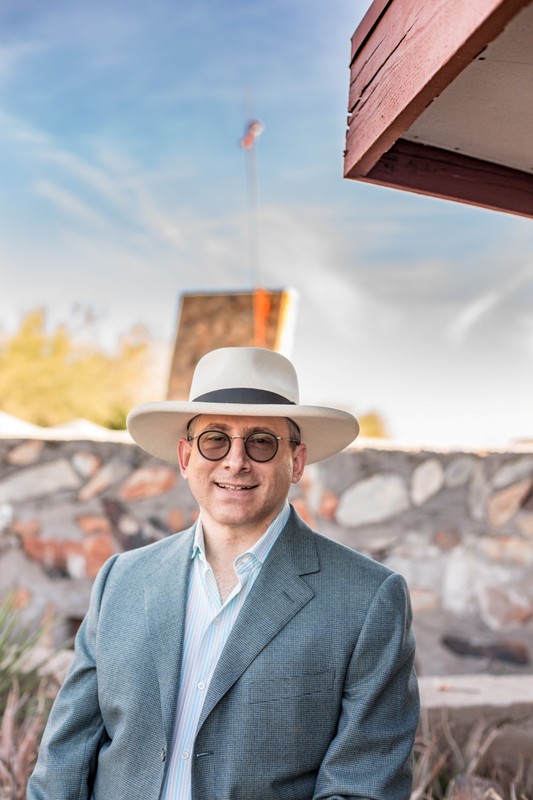
Stuart Graff
President and CEO of the Frank Lloyd Wright Foundation, who just helped land Taliesin West on the UNESCO World Heritage List
You became familiar with Frank Lloyd Wright at a young age. What most intrigued you about him/his work? There were two things that intrigued me. First was the work itself—it was just so different from any architecture that I had seen growing up in the northwest side of Chicago. I wanted to understand what these buildings were about and why they looked the way they did. And that curiosity took me to Wright’s life story—a farm kid, largely self-trained, who would go on to revolutionize the world. For a kid from a pretty humble background, that taught me that the only limits to my success were my willingness to learn and to work hard. Great stuff for an 8-year-old.
What does the UNESCO World Heritage List designation mean for modern U.S. architecture and Arizona, specifically? The experts who evaluated Wright’s work for this nomination have now validated something that the Foundation always understood—that Wright was pivotal in the development of modernism throughout the world. And this is important to our country because he was one of our first great cultural exports, at a time many Americans thought great work only came from Europe. Wright took ideas steeped in American values to Europe and started a design revolution. All of Wright’s work is inspired by the American landscape, but Wright singled-out the Arizona desert and its raw geometry as a source for the most creative and prolific part of his career.
How is Wright’s legacy being kept alive for future generations? Preservation of Taliesin West, and its older sister, Taliesin Wisconsin, is the core of our work—but we don’t just preserve buildings and landscapes. These places were all about advancing ideas of how we can live with a connection to the world around us and with each other. So our programs are evolving from traditional historic site tours into active engagement of our community, both on the campuses and through digital media, to spread these ideas, develop new thinking around connection as a sustaining force, and other work rooted in Wright’s ideas but looking forward, not backward. That’s why he created the Foundation—not to glorify his past, but to create a better future.
What is the most rewarding part of your career? What about the biggest challenge? Every day, my job is to use something I love—a legacy rooted in American values like liberty and democracy—to inspire others to find a connection with those values, and live as part of the world around them, and not merely in the world. To find beauty in the landscape, and to design every aspect of their lives around beauty in all its forms. And that’s a big mission—so the challenge is finding the means to support it.
What do you hope for the future of arts and architecture within the Valley? The Valley is challenged to sustain itself in the face of a changing climate, scarce resources and growing population. Those solutions require us to design our world to be more sustainable, to be connected to the environment and not just taking from it, but giving back. The architecture of our buildings and cities should be focused on creating an eco-system in which we play a nurturing role, rather than a destructive role. We can use the arts to help develop empathy to accept each other’s differences, too. So I hope we can building better and more resilient arts and culture institutions to help us shape a better community.
What influence do you hope to have on the Valley? We are the fifth largest metro area in the United States, but we fall far behind much smaller cities when it comes to establishing great institutions—whether we are talking about schools, hospitals, museums and other institutions that shape the quality of life in the Valley. I’d like to help us build the kind of institutions that generations of Arizonans will benefit from and be proud of. It’s happening all around us, and it’s exciting to be a part of the change.
Catching up with...
Travis Hearn
Since being featured in 2018 Most Influential Phoenicians, Travis Hearn, Senior Pastor at Scottsdale’s widely adored Impact Church, has announced that the growing church is moving to a new location at the corner of Thunderbird and Scottsdale Roads. “After working diligently behind the scenes, thousands of hours of prayer and extensive planning, I am incredibly excited to announce that we are moving,” he says. "I’m really looking forward to seeing what God has planned for us in this new location. I believe that in this new building, many lives will be changed, prayers will be answered, hope will be restored and communities will continue to be impacted.” The new space will be double the size of the existing church, with more than 900 parking spaces (a big uptick from the current 45). With this fresh location, Hearn will continue his top priority: to reach people for Jesus. “We’ve been blown away at God’s timing and goodness throughout this whole process, and we’re so excited to experience what God has planned in this next phase for Impact.” The grand opening is slated for Easter 2020.
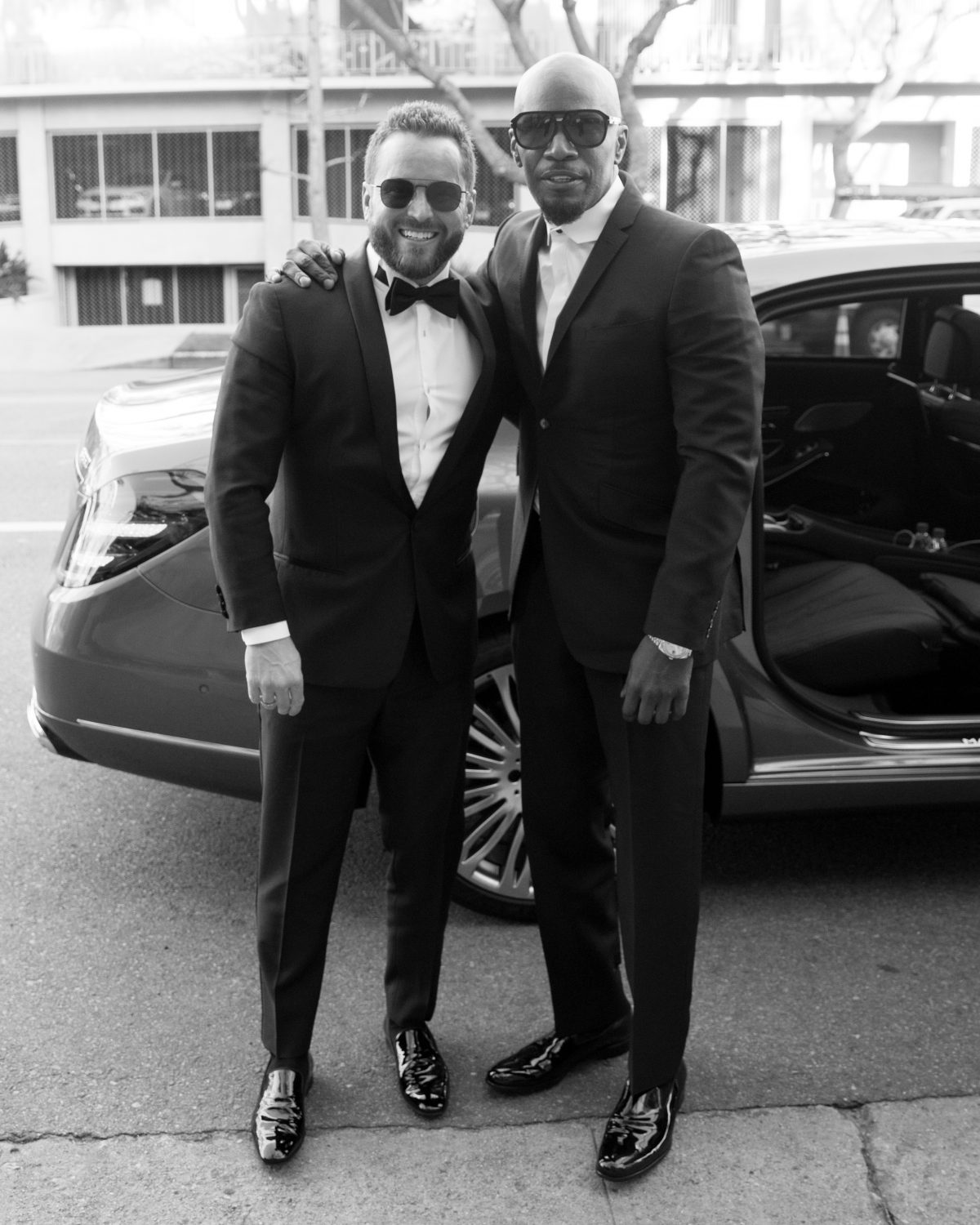
RD Whittington
President of Scottsdale's Luxury Auto Collection has made a name for himself selling cars on Instagram
You may have seen him in the NY Times. You may have seen him in photos with best friend and business partner Jaime Foxx. But if you haven't met RD Whittington and are an auto-enthusiast, listen up.
Whittington is a partner in Scottsdale's Luxury Auto Collection and founder of @wiresonly, an exclusive platform for CEOs, celebrities and those in the market for a sweet ride right now (buyers are typically at the ready to wire funds immediately to snag their dream car). Specializing in rare and European rides, Whittington has moved millions of dollars of unique cars through single 'grams, 10-second vids, and DMs.
Whittington's clients include ASAP Rocky, Chris Brown, Tyga and Future, and one of his cars was even featured in Taylor Swift's Look What You Made Me Do video.
What does the future hold for Whittington? A new dealership on Wilshire Boulevard in Beverly Hills, for starters.
